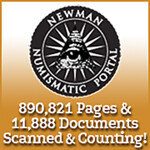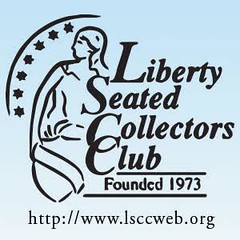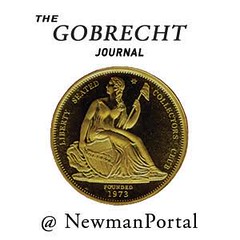
About UsThe Numismatic Bibliomania Society is a non-profit organization devoted to the study and enjoyment of numismatic literature. For more information please see our web site at coinbooks.org SubscriptionsThose wishing to become new E-Sylum subscribers (or wishing to Unsubscribe) can go to the following web page link MembershipThere is a membership application available on the web site Membership Application To join, print the application and return it with your check to the address printed on the application. Print/Digital membership is $40 to addresses in the U.S., and $60 elsewhere. A digital-only membership is available for $25. For those without web access, write to: Terry White, Treasurer
AsylumFor Asylum mailing address changes and other membership questions, contact Terry at this email address: terrywhite5475@yahoo.com SubmissionsTo submit items for publication in The E-Sylum, just Reply to this message, or write to the Editor at this address: whomren@gmail.com BUY THE BOOK BEFORE THE COINSale Calendar |
- WAYNE'S WORDS: THE E-SYLUM APRIL 2, 2017
- KOLBE & FANNING’S SALE 145 CLOSES APRIL 22, 2017
- NEW BOOK: 2017 AMERICAN LIBERTY GOLD COIN
- NEW BOOK: ANCIENT LIBRARIES
- BOOK REVIEW: HEATON'S TREATISE ON MINT MARKS
- ANA YOUNG NUMISMATISTS LITERARY COMPETITION
- GARRETT NUMISMATIC PAPERS DIGITIZED
- HELLENISTIC ROYAL COINAGES PROJECT GRANT
- NOTES FROM E-SYLUM READERS: APRIL 2, 2017
- THE SLIPPERY STANDARDS OF COIN GRADING
- GIANT GOLD MAPLE LEAF COIN STOLEN
- VOCABULARY TERM: GALVANO
- LYMAN HAYNES LOW (1844-1924)
- NUMISMATISTS EXAMINE TIME CAPSULE COINS
- MINT UNVEILS 2017 AMERICAN LIBERTY SILVER MEDALS
- DICK JOHNSON VISITS THE YALE ART MUSEUM
- NUMISMATIC NUGGETS: APRIL 2, 2017
- BICYCLE MEDALS
- 1818 WASHINGTON MARKET CHOWDER CLUB TOKEN
- WAYNE'S NUMISMATIC DIARY: APRIL 2, 2017: PART 1
- WAYNE'S NUMISMATIC DIARY: APRIL 2, 2017: PART 2
- DOES COIN SHOW TRUE PORTRAIT OF JESUS?
- ALL NEW £1 COINS RECALLED
- DIX NOONAN WEBB OFFER RARE PALESTINIAN BANKNOTES
- ARTICLE PROFILES SECOND STORY BOOKS' ALLAN STYPECK
- BOOK TUNNEL ENTRANCE TO CHINESE BOOKSTORE
- NEW INVISIBLE COINS ISSUED
- U. S. AND RUSSIA ANNOUNCE NEW JOINT CURRENCY
- FEATURED WEB SITE: NATIONAL SCRIP COLLECTORS
Click here to access the complete archive
To comment or submit articles, reply to whomren@gmail.com
Content presented in The E-Sylum is not necessarily researched or independently fact-checked, and views expressed do not necessarily represent those of the Numismatic Bibliomania Society.
WAYNE'S WORDS: THE E-SYLUM APRIL 2, 2017
 New subscribers this week include: Catherine Canuti, Richard August and Frank Robinson, courtesy of Dave Bowers; Gavin Scott, courtesy of Charles Farthing; Rob Gartenberg, courtesy of
Julian Leidman; and Ann B. Scott. Welcome aboard! We now have 2,975 subscribers.
New subscribers this week include: Catherine Canuti, Richard August and Frank Robinson, courtesy of Dave Bowers; Gavin Scott, courtesy of Charles Farthing; Rob Gartenberg, courtesy of
Julian Leidman; and Ann B. Scott. Welcome aboard! We now have 2,975 subscribers.
Thank you for reading The E-Sylum. If you enjoy it, please send me the email addresses of friends you think may enjoy it as well and I'll send them a subscription with your compliments. Contact me at whomren@gmail.com anytime regarding your subscription, or questions, comments or suggestions about our content.
This week we open with a new numismatic literature sale from Kolbe & Fanning, two new books and one review. Other topics this week include coin grading, the stolen giant gold coin, the coins from the Baltimore Washington Monument time capsule, bicycle medals, and what could be ‘one of the most important discoveries in modern history’.
To learn more about the 2017 American Liberty Silver medals, the Yale Art Museum, the Garrett numismatic papers, Lyman H. Low, King Izas-Manu of Edessa, the Clavilux, the Free Trade Anti-Corn Law medal, bibliophemera, and galvanoplasty, read on. Have a great week, everyone!
Wayne Homren
Editor, The E-Sylum
KOLBE & FANNING’S SALE 145 CLOSES APRIL 22, 2017
KOLBE & FANNING ANNOUNCE APRIL 22 AUCTION OF NUMISMATIC BOOKS
FIRM USING AUCTION MOBILITY FOR LIVE ONLINE BIDDING
Kolbe & Fanning Numismatic Booksellers have announced that their Sale 145 will be held on April 22, 2017. The 443-lot sale features selections from the libraries of Tom Cederlind and Italo Vecchi, as well as interesting and important material from other consignors on ancient, foreign and U.S. numismatics.
Some highlights of the sale include:
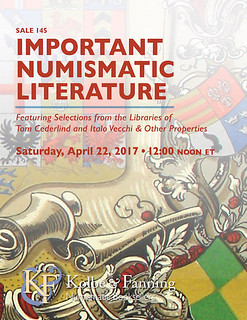
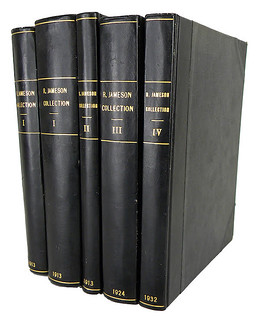
Lot 78: Jacob Hirsch’s famous auction catalogue of the Consul Weber collection of ancient Greek coins, bound in red half morocco (the sale features several other Hirsch catalogues in similar bindings)
Lot 92: Joel Malter’s set of the Collection R. Jameson of ancient Greek & Roman coins
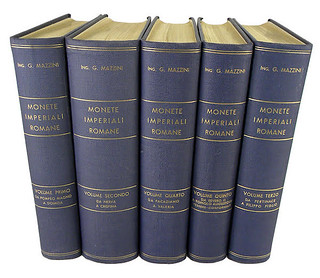
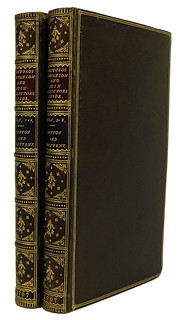
Lot 112: a set of Mazzini’s magnificent Monete Imperiale Romane
Lot 227: a beautifully bound complete set of Denton & Prattent’s Virtuoso’s Companion to 18th-century British tokens
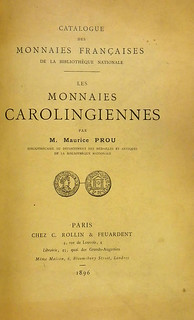
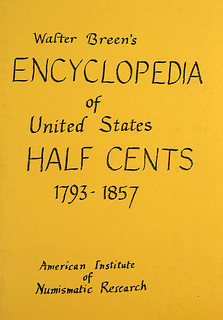
Lot 262: an original copy of Maurice Prou’s very scarce but foundational work on Carolingian coins, still a standard reference after more than 120 years
Lot 320: an original annotated typescript of Walter Breen’s highly important work on U.S. half cents, with original correspondence laid in
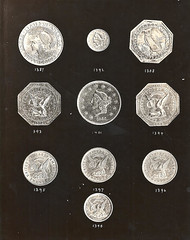
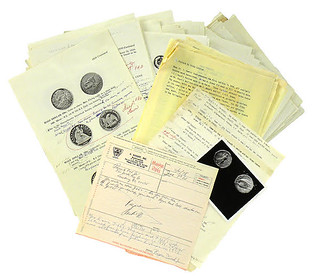
Lot 335: Tom Elder’s catalogue of the George Alfred Lawrence collection, with the complete complement of 22 outstanding photographic plates
Lot 369: Abe Kosoff’s original files for revising the J. Hewitt Judd pattern book, including original annotated pages, photographs, carbon-copy typescripts, correspondence and other materials
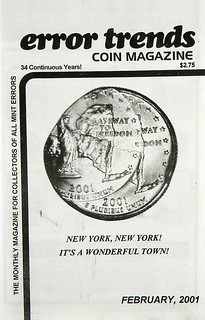
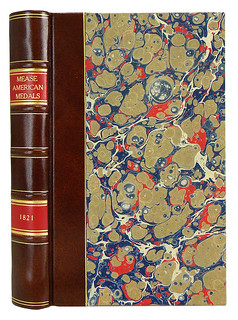
Lot 378: a nearly complete set of Error Trends Magazine, of one several lots offering comprehensive runs of publications on error coins, some of them very obscure and rare
Lot 381: the 1821 edition of James Mease’s foundational article on North American medals, the first substantial numismatic work published in the United States and only the second copy to be offered at auction in the numismatic marketplace.
Starting with this auction, Kolbe & Fanning will be using Auction Mobility as their third-party online bidding platform. Auction Mobility is an app-based platform allowing users the ability to participate in the sale through phones, tablets and computers (though bids placed via post, email, fax or phone will continue to be accepted). To register for the sale, bidders must go to bid.numislit.com and sign up. We believe that once our clients have set up their accounts, they will recognize that the new platform is an improvement and is easy to use to browse lots, place bids, or participate in the live sale online. Those wishing to participate on their devices can download the new Kolbe & Fanning app through the Apple or Google Play Store.
The printed catalogue of Sale 145 has been mailed to active customers. A PDF of the printed catalogue has been posted to the firm’s website at numislit.com for those who prefer that format (the online catalogue is truncated). Bids may be placed via post, email, fax or phone prior to the sale. Advance absentee bids may also be placed through the online catalogue at bid.numislit.com; live internet bidding will be available during the sale itself through the same platform.
Kolbe & Fanning Numismatic Booksellers LLC is a licensed and bonded auction firm in the State of Ohio. For more information, please see the Kolbe & Fanning website at numislit.com or email David Fanning at df@numislit.com. To register for the sale, go to bid.numislit.com. We look forward to your participation.

NEW BOOK: 2017 AMERICAN LIBERTY GOLD COIN
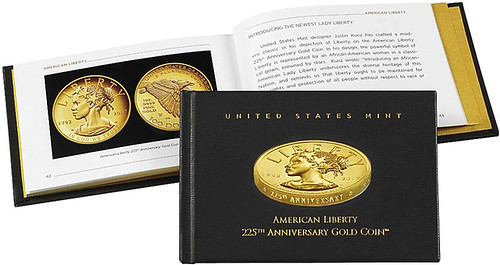
Celebrate the United States Mint’s 225th anniversary with a brand new design that remembers our past and embraces the future! This new design featuring an African–American woman as Lady Liberty is a fresh take on our Nation’s cultural roots, the traditional allegorical representation of Liberty, blending one of the most important symbols of our past with the creation of a modern American symbol.
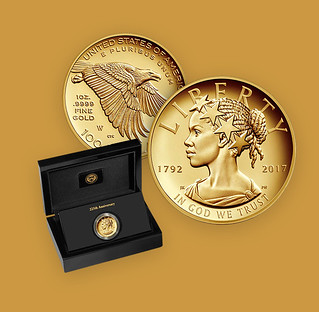 This new coin embraces our Nation’s founding principles that “all men are created equal … with certain unalienable rights, that among these are Life, Liberty and the pursuit of Happiness.”
Join us as we celebrate this anniversary with a newly “minted” American symbol, the culmination of 225 years of progress and artistic vision.
This new coin embraces our Nation’s founding principles that “all men are created equal … with certain unalienable rights, that among these are Life, Liberty and the pursuit of Happiness.”
Join us as we celebrate this anniversary with a newly “minted” American symbol, the culmination of 225 years of progress and artistic vision.
Designer Justin Kunz has crafted a modern classic in his depiction of Liberty on the 2017 American Liberty 225th Anniversary Gold Coin. This 99.99% 24–karat gold coin is the first high relief coin with a proof finish ever minted by the United States. Each coin is hand packaged in an exquisite black–lacquered hardwood presentation case and is accompanied by a companion hard–cover book detailing the fascinating numismatic history of our Nation’s most cherished symbol.
The Proof 2017-W American Liberty gold $100 coin to go on sale at noon ET April 6 from the U.S. Mint will be accompanied by a hardbound, color-illustrated book chronicling the coin’s design, development and production.
The book is 48 pages in length, not counting the front and back flyleaf pages and case cover. The book measures 5.5 inches by 3.9375 inches.
The book was printed by Westland Printers in Laurel, Md., with binding executed by Advantage Book Binding in Baltimore.
To read the complete article, see:
Hardcover book accompanies Proof 2017-W American Liberty gold $100 coin
(www.coinworld.com/news/us-coins/2017/04/hardcover-book-with-2017-w-american-liberty-gold-coin.all.html)
For mroe information, or to order, see:
2017 AMERICAN LIBERTY 225TH ANNIVERSARY GOLD COIN
(https://catalog.usmint.gov/225th-united-states-mint-anniversary.html?cm_sp=FC-_-225_am_lib_gold_coin-_-040117)

NEW BOOK: ANCIENT LIBRARIES
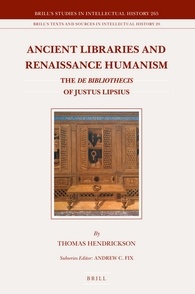 Ancient Libraries and Renaissance Humanism
Ancient Libraries and Renaissance Humanism
The De bibliothecis of Justus Lipsius
Thomas G. Hendrickson
Although many humanists, from Petrarch to Fulvio Orsini, had written briefly about library history, the De bibliothecis of Justus Lipsius was the first self-contained monograph on the topic. The De bibliothecis proved to be a seminal achievement, both in redefining the scope of library history and in articulating a vision of a public, secular, research institution for the humanities. It was repeatedly reprinted and translated, plagiarized and epitomized. Through the end of the nineteenth century, scholars turned to it as the ultimate foundation for any discussion of library history. In Ancient Libraries and Renaissance Humanism, Hendrickson presents a critical edition of Lipsius’s work with introductory studies, a Latin text, English translation, and a substantial historical commentary.
For more information, or to order, see:
Ancient Libraries and Renaissance Humanism
(www.brill.com/products/reference-work/ancient-libraries-and-renaissance-humanism)
BOOK REVIEW: HEATON'S TREATISE ON MINT MARKS
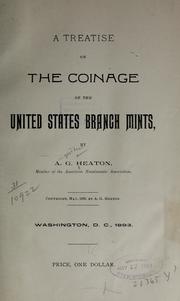 Many collectors today will be surprised to learn that 19th century American numismatists generally paid little attention to mint marks. The typical collectors put together date runs, often
proofs and an 1873 proof Liberty Seated dollar was just as good as an uncirculated example of the same year from the Carson City Mint. This all changed in 1893 with the publication of Augustus
Heaton’s A Treatise on the Coinage of the United States Branch Mints (https://nnp.wustl.edu/library/book/512404).
Many collectors today will be surprised to learn that 19th century American numismatists generally paid little attention to mint marks. The typical collectors put together date runs, often
proofs and an 1873 proof Liberty Seated dollar was just as good as an uncirculated example of the same year from the Carson City Mint. This all changed in 1893 with the publication of Augustus
Heaton’s A Treatise on the Coinage of the United States Branch Mints (https://nnp.wustl.edu/library/book/512404).
Heaton’s motivation to delve into mint marks is explained in the preface of the work –
“The writer, a few years since, after enriching his almost complete collection of silver and minor issues of the parent institution [Philadelphia Mint] with all attainable varieties, became much interested in gathering United States coinage bearing the letters to which he has referred. The attraction of his pursuit grew with each piece acquired, each series completed, and each unknown variety found, until his modern dates quite divided his consideration with the old.”
Here we see the timeless quality of a numismatist – the desire to explore the unknown and to document the findings. Not to mention that an interesting collection can be assembled in the course of the work! These characteristics are all operative today and any number of authors are systematically researching die varieties and documenting discoveries in a variety of formats.
Heaton’s work was first announced in the \ in May, 1893 (https://nnp.wustl.edu/library/book/512969, p. 90). A book on a new collecting topic is a fine thing, but the corresponding market won’t gain traction without collectors and dealers rallying around the concept. Edouard Frossard’s sale of the Friesner collection in June 1894 (https://nnp.wustl.edu/library/auctionlots?AucCoId=510789&AuctionId=511389) was well-timed in this regard. The cataloger remarked in the preface
“Mr. Friesner made the collecting of the Silver Coins of the Branch Mints of New Orleans, San Francisco, and Carson City a specialty. His arrangement of the Coins under these sub-heads has been preserved , and forms a happy innovation in classification, which will no doubt be appreciated by the many Collectors interested in the subject.”
In creating the catalog, Frossard arranged offerings by mint mark rather than strictly by denomination as is the custom today. Frossard’s novel approach was copied by other catalogers well into the 20th century.
Among the Liberty Seated delicacies in the Carson City group (p. 29) were an 1873-CC dollar (realized $9.25), 1870-CC quarter (realized $4.00) and an 1872-CC dime (realized $0.60). An 1838-O half dollar, by this time more appreciated than the relatively recent Carson City coinage, hammered at $113. (Lest the reader consider this is a “bargain,” a few strokes on the calculator reveal a 7% annual return on the investment, assuming a value of $500,000 today. This is substantially lower than the return on the stock market over the same period.)
While Frossard the dealer did his part to promote the branch mint concept, two collectors fueled the fire. One was Heaton himself. The July 1894 Numismatist commented
“the mint marks of the Friesner collection formed the most profitable part of the sale. Heaton’s Treatise on the Coinage of the Branch Mints is the only guide to this line of coin study and indispensable to American collections.....[Heaton] obtained at the Friesner sale the 1838-O mint half-dollar and the 1842-O quarter-dollar, paying for the former $113.00. He only needs now, we believe, the 1873-S dollar and C.C. 1873 dime without arrows to complete his series of mint marks.” The Numismatist also printed this tidbit – “J. M. Clapp also obtained a long line of prizes at the Friesner sale. He has lately taken up the collection of gold as well as silver mint marks.”
The Clapp name needs little introduction, as advanced collectors all know that the Clapp coins formed the lion’s share of the spectacular branch Mint silver in the Eliasberg collection, sold by Bowers & Merena in 1996 and 1997.
With two high-powered collectors and a prominent dealer on board, the stage was set, and today we can hardly imagine collecting U.S. coins without serious consideration of mint marks. The only mystery remaining is the disposition of the Heaton coins. Heaton was a president of the New York Numismatic Club, a position generally associated with significant collec- tions. Two Heaton consignments are found in Thomas Elder sales of February and June 1926 https://nnp.wustl.edu/library/auctionlots?AucCoId=23&AuctionId=513413 and https://nnp.wustl.edu/library/auctionlots?AucCoId=23&AuctionId=513415 but the material is minimal and not pertinent to this discussion. David Stone and Mark Van Winkle note in their recent monograph on the 1838-O half dollar that the Heaton collection sold in- tact to the Baltimore collection Waldo Newcomer.
While a few coins survive with the Heaton pedigree (the 1838-O half dollar sold at the 2008 Central States sale), it is a pity that today’s market lacks a more available supply of Branch Mint coins that can be traced to this foundational collection.
For more information on the Liberty Seated Collectors Club, see:
www.lsccweb.org
THE BOOK BAZARRE
ANA YOUNG NUMISMATISTS LITERARY COMPETITION
Entries are now being accepted for the 2017 American Numismatic Association’s (ANA) Young Numismatist Literary Awards competition. The awards program encourages young writers and promotes future numismatic authors and researchers. All submissions must be postmarked by May 15.
The contest is open to young writers in three age groups, all of whom will compete for cash awards and numismatic book vouchers. Article submissions will be evaluated by a panel of judges, including Bill Fivaz, Q. David Bowers and Kenneth Bressett. Awards will be presented in Colorado Springs at the ANA’s 2017 Summer Seminar, June 17-29. Those who are unable to attend will receive their awards by mail.
ELIGIBILITY
To compete in this year’s competition, participants must be ANA members. Submitted articles can focus on a numismatic topic of the competitor’s choice.
Bill Fivaz Young Numismatist Literary Award (Ages: 8-12)
Article should display basic knowledge of a numismatic topic. Creativity and original conclusions are encouraged.
Suggested length: 450-900 words
Q. David Bowers Young Numismatist Literary Award (Ages: 13-17)
Article should display advanced knowledge of a numismatic topic. Logically presented facts and original conclusions are encouraged. A bibliographic list of sources is recommended, but not required.
Suggested length: 900-1,800 words
Kenneth E. Bressett Young Numismatist Literary Award (Ages: 18-22)
Article should display in-depth knowledge of a numismatic topic. Logically presented facts and original conclusions are required, as is a bibliographic list of sources. Inclusion of charts, graphs,
tables or other illustrations is encouraged.
Suggested length: 1,800-3,600 words
AWARDS
Whitman Publishing has collaborated with the ANA to offer prizes. The following will be awarded in each of the three age categories:
First Place
Plaque and $500 cash prize, plus a $500 voucher to help build a personal library of numismatic books produced by Whitman Publishing.
Second Place
Certificate, plus a $200 book voucher from Whitman Publishing.
Third Place
Certificate, plus a $100 book voucher from Whitman Publishing.
Completed entries can be emailed to magazine@money.org or sent to:
ANA Publications Department
c/o Cynthia Wood-Davies
818 N. Cascade Avenue
Colorado Springs, CO 80903
For additional information, contact Cynthia Wood-Davies, copy editor of The Numismatist, at cwood-davies@money.org.

GARRETT NUMISMATIC PAPERS DIGITIZED
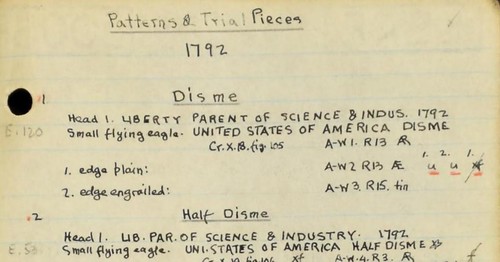
T. Harrison and John Work Garrett Numismatic Papers Digitized
The Garrett name is one of the most recognizable in American numismatic history, being associated with the Garrett family collection dispersed through four sales by Bowers and Ruddy between 1979 to 1981. The collection was a reflection of 19th century collecting habits (Washington pieces, colonials, and U.S. patterns) that included rarities such as two Brasher doubloons and an 1804 dollar. Federal coins were plentiful, but not to the extent of other contemporary collections that typically included extensive variety sets of early U.S. copper and long runs of 19th century U.S. proof coinage. Still, the series of sales set a record of $25 million, even as the precious metals market was simultaneously collapsing.
John Work Garrett bequeathed his Baltimore estate, Evergreen House, to Johns Hopkins University upon his death in 1942. The Garrett numismatic collection was included, and this was eventually sold through Bowers and Ruddy as noted above. David and Susan Tripp, then Director of Johns Hopkins University Collections, later facilitated the transfer of the Garrett papers to the American Numismatic Society (ANS). Today housed in 20 archival boxes, these papers include correspondence with leading collectors and dealers, and inventory records related to the development of the collection, first through T. Harrison Garrett (1848-1888) and then John Work Garrett (1872-1942).
The Garrett papers were scanned at the ANS through the efforts of ANS Librarian David Hill and Internet Archive Associate John Graffeo, under the sponsorship of the Newman Numismatic Portal. These are now available for viewing on the Newman Portal.
Link to Garrett papers on the Newman Portal
https://nnp.wustl.edu/Library/Archives?searchLetter=G
Link to ANS Archer catalog entry for the Garrett papers:
http://numismatics.org/archives/ark:/53695/nnan0054
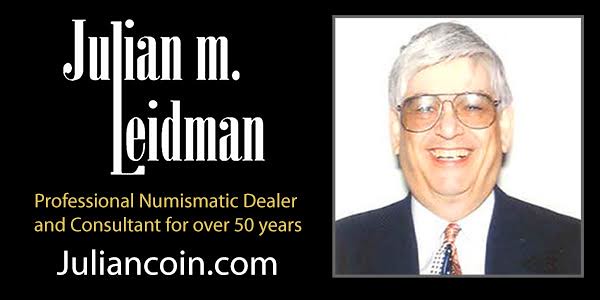
HELLENISTIC ROYAL COINAGES PROJECT GRANT
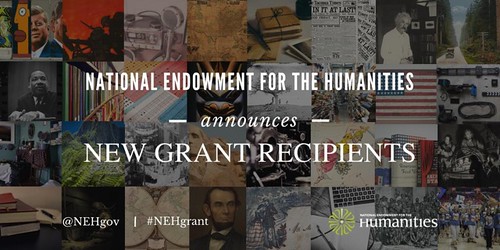
We are thrilled to announce that the National Endowment for the Humanities (NEH) has awarded the American Numismatic Society (ANS) a substantial grant of $262,000 to fund the web-based Hellenistic Royal Coinages (HRC) project. Under the direction of Curator Dr. Peter van Alfen and Director of Data Science Ethan Gruber, this three-year project (Phase 1, planned for 2017–2020) promises to radically transform the ability of students, scholars, or collectors to identify and research Hellenistic royal coinages, and to incorporate this numismatic material into broad analyses of political, economic, and social history. The funds from this grant will be used solely to hire assistants to aid in the extensive photography, cataloguing, and typology work that lies at the heart of the project.
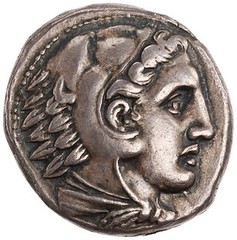 HRC will be built around seven interlinked components, employing the principles of Linked Open Data, already successfully deployed in a number of other ANS projects (including the
NEH-funded Online Coins of the Roman Empire). These include three standalone online tools each of which is devoted to the coinage of a single royal dynasty. These are: (1) PELLA, with a focus on
the Argeads of Macedonia including Alexander the Great; (2) Seleucid Coins Online (SCO); and (3) Ptolemaic Coins Online (PCO). Incorporated within these three tools will be (4) a monogram and symbols
repository. Two additional standalone tools, (5) Greek Coin Hoards and (6) the scanned Newell notebooks, will provide full documentation of available hoard evidence and provenance information for
many individual coins. While all of the standalone tools will be interlinked, they will also be united through a portal site, (7) Hellenistic Royal Coinages, that will serve as a union catalogue for
global searches and as a platform for later expansion, which will focus on adding the coinages of the remaining Hellenistic dynasties (Phase 2, post-2020).
HRC will be built around seven interlinked components, employing the principles of Linked Open Data, already successfully deployed in a number of other ANS projects (including the
NEH-funded Online Coins of the Roman Empire). These include three standalone online tools each of which is devoted to the coinage of a single royal dynasty. These are: (1) PELLA, with a focus on
the Argeads of Macedonia including Alexander the Great; (2) Seleucid Coins Online (SCO); and (3) Ptolemaic Coins Online (PCO). Incorporated within these three tools will be (4) a monogram and symbols
repository. Two additional standalone tools, (5) Greek Coin Hoards and (6) the scanned Newell notebooks, will provide full documentation of available hoard evidence and provenance information for
many individual coins. While all of the standalone tools will be interlinked, they will also be united through a portal site, (7) Hellenistic Royal Coinages, that will serve as a union catalogue for
global searches and as a platform for later expansion, which will focus on adding the coinages of the remaining Hellenistic dynasties (Phase 2, post-2020).
To read the complete article, see:
THE NATIONAL ENDOWMENT FOR THE HUMANITIES FUNDS THE ANS’S HELLENISTIC ROYAL COINAGES PROJECT
(http://numismatics.org/pocketchange/neh-hrc/)
NOTES FROM E-SYLUM READERS: APRIL 2, 2017
The ABCs of PDOS
Tom DeLorey writes:
Apropos the interesting biography of numismatic publishing pioneer Wayte Raymond, I wonder how many of our fellow E-Sylum readers have noticed that Raymond books and coin albums listed mint marks in chronological order based upon the years that the different mints were established, such as (P), O, S and D, while the more modern Whitman products list them in alphabetical order (other than Philadelphia which is always first.)
I am reliably informed that this is due to the fact that the early Whitman products copied the Raymond mint mark order, and it was suggested to them by the then-mighty Raymond empire that this might be an infringement of the copyright laws.
To read the earlier E-Sylum article, see:
WAYTE RAYMOND (1886-1956) (www.coinbooks.org/v20/esylum_v20n13a14.html)
Bibliophemera
Pete Smith writes:
I came across a new vocabulary word today, bibliophemera. This would be ephemera related to books, stationers, and book sellers. I have been collecting numismatic bibliophemera but didn't know it had a name.
I recall visiting Wayne Homren's home and library. Wayne had a large collection of numismatic bibliophemera in loose leaf notebooks in his garage, although I don't think that was normally where they were kept.
Book: The Great Gold Swindle of Lubec, Maine
Regarding last week's mention of the New England Gold Hoax of 1898, Jeff Starck of Coin World writes:
The scam you reference is a neat story, indeed… so much so that there is of course a book about it.
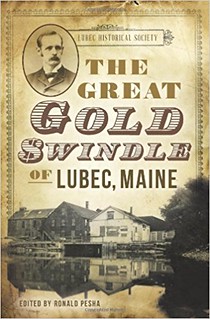 In 1897, a stranger named Reverend Prescott Jernegan arrived in Lubec and made a bold claim: he could extract gold from seawater. To do so, he used so-called accumulators of electrically
charged rods in iron pots. Fooling many, he actually hid the gold beneath a wharf in the Bay of Fundy during the night. He and his accomplice, Charles Fisher, preached with fervent enthusiasm as they
built their factory and encouraged inspections, which reversed doubters to greedy high-stakes investors. Hundreds of laborers accelerated factory expansion until July 1897, when Jernegan and Fisher
fled. Although residents of Lubec attempted civil and criminal action, both men relocated, and fantasies of gold wealth flowed away. Relive the excitement, disappointment and anger of
turn-of-the-century Mainers in this collection of accounts about the Lubec gold hoax.
In 1897, a stranger named Reverend Prescott Jernegan arrived in Lubec and made a bold claim: he could extract gold from seawater. To do so, he used so-called accumulators of electrically
charged rods in iron pots. Fooling many, he actually hid the gold beneath a wharf in the Bay of Fundy during the night. He and his accomplice, Charles Fisher, preached with fervent enthusiasm as they
built their factory and encouraged inspections, which reversed doubters to greedy high-stakes investors. Hundreds of laborers accelerated factory expansion until July 1897, when Jernegan and Fisher
fled. Although residents of Lubec attempted civil and criminal action, both men relocated, and fantasies of gold wealth flowed away. Relive the excitement, disappointment and anger of
turn-of-the-century Mainers in this collection of accounts about the Lubec gold hoax.
For more information, or to order, see:
The Great Gold Swindle of Lubec, Maine
(https://www.amazon.com/Great-Gold-Swindle-Lubec-Maine/dp/1626190089/ref=sr_1_fkmr0_1)
To read the earlier E-Sylum article, see:
THE NEW ENGLAND GOLD HOAX OF 1898 (www.coinbooks.org/v20/esylum_v20n13a17.html)

THE SLIPPERY STANDARDS OF COIN GRADING
Regarding last week's mention of chopmarked Trade Dollars, Ralf Böpple of Stuttgart, Germany writes:
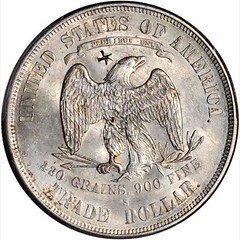 While I am perfectly fine with chopmarked coins (after all, I am a member of the Chopmark Collectors Club), I had to wonder about the grade of MS-62 given to one of them.
While I am perfectly fine with chopmarked coins (after all, I am a member of the Chopmark Collectors Club), I had to wonder about the grade of MS-62 given to one of them.
When I first learned about US coins, the Sheldon scale and slabs about 25 years ago, I was told that MS stands for "mint state". Now I know that coin grading is an art and not a science, but if anything can be taken as a sure thing, it is that a coin with chopmarks did circulate! Even if the wear it sustained was so little that it could still pass as an uncirculated coin...
The type of coins I collect usually do not come in slabs, and if they do, they get cracked out as quickly as they enter my home, so I am no expert. But I have heard people complaining about grading standards becoming less and less strict. It appears to be the case.
Another MS-62 coin I recently saw in an auction was described as "traces of cabinet friction are noted". Again, 25 years ago, that was the description of a typical AU-58, coins in this grade were even called "sliders".
When did this change?
While we typically avoid discussions of grading and valuation in The E-Sylum, Ralf's question is a good opportunity to review the history of third-party grading in the U.S., an industry I've seen appear and evolve during my numismatic career. As a hobbyist and not a dealer, I've seen this mostly as a bystander, but many of our readers have been on the front lines of this phenomena.
Linked below are articles from a year or so ago relating to the general topic of third and fourth-party grading. A short overview of the history of changing grading standards would be useful. -Editor
To read the earlier E-Sylum articles, see:
NOTES FROM E-SYLUM READERS: AUGUST 2, 2015: Decoding the Slab (www.coinbooks.org/esylum_v18n31a11.html)
PETE SMITH ON DECODING THE SLAB (www.coinbooks.org/esylum_v18n32a15.html)
NEW PRICE GUIDE: CAC MARKET VALUES (www.coinbooks.org/esylum_v19n30a05.html)
STACKS BOWERS OFFERS CHOPMARKED TRADE DOLLARS (www.coinbooks.org/v20/esylum_v20n13a31.html)
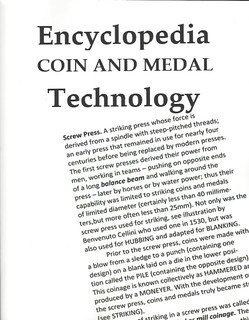
LAST CALL
Two Weeks Left! If you want a copy of this incredible book order now at the discounted price of $50. Price goes up to original price of $100 on April 15 if any copies are still available.Order all three of my books and a new book from Spain.
Encyclopedia of Coin and Medal Technology
1,854 entries on every aspect of how coins and medals are made, cataloged and collected., Sample entries in recent E-Sylum issues as Vocabulary Words. Do not miss this opportunity! 678 pages, card cover. . . . .$50
Monograms of American Coin and Medal
Artists. Identifies over 450 initials and monograms found on American coins and medals. 147 pages, card cover. . .. . . $45
Who’s Who Among American Medallists.
Biographies of 4,137 artists of American coins and medals, with some as long as 4 pages. With article of American Art Styles, bibliography 386 pages, Hard cover. . … $65
Just published! El Numiscadero, English to Spanish and Spanish to English. By Gary Beals. I served as technical editor for this innovative work. Useful for all Spanish numismatics. Fully illustrated. Over 2,000 terms. 354 pages Card cover...$35
Dick Johnson 139 Thompson Drive Torrington, CT 06790
GIANT GOLD MAPLE LEAF COIN STOLEN
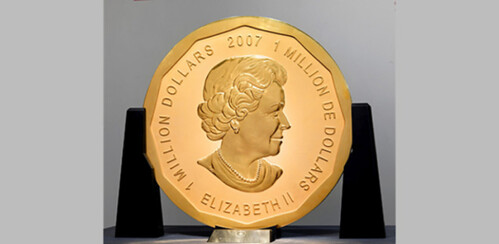
According to updated reports, German investigators believe that it took only about 25 minutes for thieves to make off with a 100 kilogram pure gold coin earlier in the week.
The coin, created by the Royal Canadian Mint in 2007, dubbed the Big Maple Leaf, had been on display in Berlin’s Bode Museum since 2010, was stolen around 3:30 a.m. local time Monday. Police said that it appears the thieves gained access to the museum from the city tram tracks, which were shut down at the time. The thieves used a ladder to bridge the distance between the tracks and a museum window, which they jarred open.
There was still no mention how the thieves bypassed the museum’s security system.
After breaking bulletproof glass, the burglars (police suspect there was more than one person involved because of the sheer size of the coin) exited the museum the same way they came in. The coin was then moved along the tracks to the Hackescher Markt, a popular market square in the city, and was then lowered to the ground using a pulley system.
“It’s definitely a case that involved a high amount of criminal energy,” Bernhard Weisser, the director of the Bode Museum’s Numismatic Collection, was quoted by the Canadian newspaper the Globe and Mail as saying.
While the coin has a face value of $1 million, at current prices the coin is worth around $4 million as gold was hovering around $1,245 an ounce Thursday. Gold prices have fallen more than 1% since the coin was first stolen; the same day prices hit a one-month high.
Investigators expect that the coin will be melted down so it can be sold and transported easier.
To read the complete article, see:
It Took 25 Minutes For Thieves To Steal 100kg Coin -
German Investigators (www.forbes.com/sites/kitconews/2017/03/31/it-took-25-minutes-for-thieves-to-steal-100kg-coin-german-investigators/#2604ecee675d)
"Based on the information we have so far we believe that the thief, maybe thieves, broke open a window in the back of the museum next to the railway tracks," police spokesman Winfrid Wenzel told Reuters news agency. "They then managed to enter the building and went to the coin exhibition."
"The coin was secured with bullet-proof glass inside the building. That much I can say," he added - but refused to discuss details about security staff or the alarm system.
To read the complete article, see:
Solid gold coin worth $4m stolen from Berlin museum (www.bbc.com/news/world-europe-39409754)
in the previous issue, I rejoiced about having no bad news at all in sight, and asked you to check with the colleagues of the daily press for any such releases. Now the daily press – not only in Germany but throughout the world – reports in great detail, for a change, on an incident that concerns the numismatic community. And, of course, the incident is a sad one. The heist of the Big Maple Leaf from the Berlin Bode Museum makes the front pages and has received even scorn and derision already.
After all, the burglars seemed to have had an easy job: it only took a ladder, a rope and a wheelbarrow to snatch 3.7 million euros worth in gold. The truth is, though: many things that appear to be so easy have been carefully planned. As long as investigations are going on, we should keep in mind that security systems in the Berlin Münzkabinett have worked in the past decades and even centuries (please read our related News #1).
Let’s hope that the coin will soon be exhibited again. Unfortunately, it was very likely the only one of the five coins – that have also entered the Guinness Book of Records – that was ever to be displayed to the public and not be stored in a vault permanently. We very much hope that the Berlin Münzkabinett and its visitors will soon get this attraction back!
Since Monday, all 19 houses of the Staatliche Museen zu Berlin have further tightened up safety. How the thieves managed to overcome security systems, is not yet clear. Director-General of the Staatliche Museen zu Berlin, Michael Eissenhauer, announced in an official statement: “We are shocked that the burglars overcame our security systems, which we have successfully used to protect our objects for many years.” The burglars have proceeded with an enormous criminal energy and brutality. In the last decades at least there has been no previous incident of this kind in the entire museums community. “A heist of such a dimension constitutes a challenge for the Berlin police as well”, said a police spokesman.
The Münzkabinett staff is shaken and stunned. Nobody would have believed that the huge gold coin could be taken by perpetrators.
Actually, Director of the Münzkabinett, Bernhard Weisser, has to go back as early as 1718 to track a similar heist in the Berlin Münzkabinett. The then castellan and a blacksmith of the royal court had embezzled the collection of Frederick William I on a large scale. They were caught and subsequently quartered. The present incident raises the question whether or not the thieves had insider knowledge. The break-in was certainly well-planned. “A heist of this dimension isn’t just something an ordinary person can accomplish in passing. It requires detailed planning”, a police spokesman is quoted in the media.
The Big Maple Leaf is thought to be impossible to sell. The burglars are very likely to try to melt down the haul. That, however, is also difficult on a technical level. Police, therefore, are asking anyone to come forward if having been offered larger quantities of gold, in an unusual format. A use in every-day life is less likely, although with tongue in cheek, Berlin Transport Company, BVG, excluded it already. “In light of current events”, it announced via Twitter that the BVG ticket machines do not accept any 100 kilo coins. Police then added, also via Twitter: “But you are welcome to change any 100 kilo coins at every local police station.”
It is to be hoped that the coin will be found and the thieves caught. The Münzkabinett at any rate certainly misses the Big Maple Leaf as a crowd puller with young people already.
To read the complete article, see:
Giant gold coin stolen from Bode Museum
(www.coinsweekly.com/en/News/Giant-gold-coin-stolen-from-Bode-Museum/4?&id=4622)
To read the earlier E-Sylum articles, see:
CANADA AUTHORIZES MILLION-DOLLAR GOLD COIN? (www.coinbooks.org/esylum_v10n06a27.html)
CANADA'S MILLION-DOLLAR COIN UNVEILED (www.coinbooks.org/esylum_v10n18a30.html)
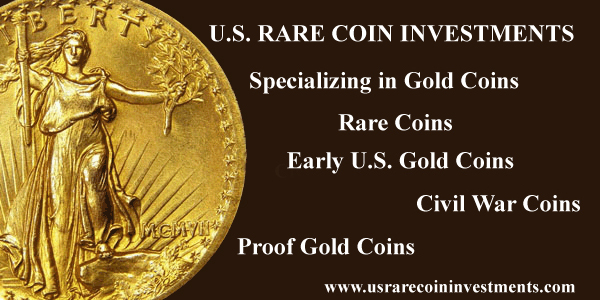
VOCABULARY TERM: GALVANO
Galvanos are metal shells which replicate a bas-relief design. They are made in an electrolytic tank usually of pure copper but can be any metal which conducts electricity. They are ideal to serve in the negative as the patterns for dies, from oversize to cut a die in any size. Galvanos were an important step for the production of all coins and art medals by all mints for most of the 20th century, being gradually replaced by epoxy molds. They also make spectacular wall plaques in positive form. Note the wide flange on the edge outside the design, this is where clamps hold the galvano in position while it rotates. Photo: Medallic Art Co.
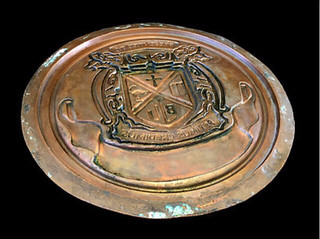 Galvano. An electroform; a medallic item or a pattern made by electrolysis. In medallic work, a galvano is always one-sided and made by placing a bas-relief
mold or pattern (of plaster, plastic or metal) in an electrolytic tank containing an electrolyte solution. The mold forms the CATHODE. Pure bars of copper (or silver, gold or other pure metallic
element which conducts electricity) furnish the material which forms the ANODE. A weak electric current (DC) is introduced to create a circuit; ions leach off the anode, travel through the
electrolyte by the process of electrolysis to deposit on the cathodic mold. This metallic deposit builds up one ion at a time. In time a sufficient thickness develops, it can be removed from the
electrolyte and the galvano is separated from the mold.
Galvano. An electroform; a medallic item or a pattern made by electrolysis. In medallic work, a galvano is always one-sided and made by placing a bas-relief
mold or pattern (of plaster, plastic or metal) in an electrolytic tank containing an electrolyte solution. The mold forms the CATHODE. Pure bars of copper (or silver, gold or other pure metallic
element which conducts electricity) furnish the material which forms the ANODE. A weak electric current (DC) is introduced to create a circuit; ions leach off the anode, travel through the
electrolyte by the process of electrolysis to deposit on the cathodic mold. This metallic deposit builds up one ion at a time. In time a sufficient thickness develops, it can be removed from the
electrolyte and the galvano is separated from the mold.
Galvanos can be made positive or negative (provided the pattern is the opposite: a positive pattern makes a negative galvano). In the numismatic and medallic field negative galvanos are the form of pattern making of a bas-relief to be converted into a die. Galvanos are ideal for use on a PANTOGRAPH, a die-engraving pantograph, where they can be modeled oversized and reduced to any size die (by ratio of from 10- to 3-to- 1). This includes coin dies and medal dies from six inches to charm size.
However, since positive galvanos can be electrolytically cast in permanent metal form, they are often held in esteem because of this three-dimensional form in the exact size of the artist’s original model. When given a patina finish they look exactly like the coin or medal made from that oversize pattern. These positive galvano casts are often mounted on wood and become a very desirable wall hanging. In the later decades of the 20th century very popular medals, like presidential inaugural medals, were issued in galvano form as well as medallic form.
History of galvanos. Galvano is named after an Italian, Luigi (or Alolsio) Galvani, who, in 1791, first observed electric current. Michael Faraday, an Englishman, developed the generation of direct current in the 1830s. But it was a German, Moritz Herman von Jacobi (1801-1874), who developed, in 1837, the process using electric current he called "galvanoplasty" which today is known as ELECTGROFORMING.
The British immediately embraced this process to create ELECTROPLATING, obtaining the first patents in 1840. The British also used this process to replicate, or duplicate, existing small bas-relief objects. The British Museum, in 1859, appointed a sealmaker, Robert Cooper Ready (1811-1901), to electroform objects – including coins and medals – in the Museum's collections. In his lifetime Ready made over 22,000 of these, and his son, Augustus P. Ready carried on after him. See ELECTROTYPE.
Galvanos were employed by mints to prepare oversize patterns for pantographic reduction – replacing iron foundry casts – because of their much finer detail and sharp, crisp edges of relief (while lettering was still imparted with punches). Mints in Italy, France and later England, employed galvanos. A writer on minting technology in Italian mints, related how this technology was in use by 1879. (See Bibliography, F3 Sacchetti.)
Galvanos as an art form. As soon as German Moritz Jacobi developed his "galvanoplasty" process in 1837 it was considered as an art technique. However German medalists disregarded the new three-dimension casting method, continuing to prefer instead, their customary hand engraving. It was the Austrian, French and English artists –particularly wax modelers – who quickly embraced the process to convert their models into permanent metal form.
Austrian Henri Kautsch displayed 29 galvanos in the 1910 medallic exhibition at the American Numismatic Society in New York. An earlier British sculptor and wax modeler, John Henning (1771-1851) reproduced his first galvano from a model he had created in 1821: Raphael's Death of Ananias. There was somewhat slow acceptance in all but one European country.
It was France, by contrast, which embraced this process as a new art form, creating art objects electroformed from patterns created specifically for the new process.. Bas-reliefs were ideal for this. Such patterns could be worked in clay, wax or plaster and electroformed into a permanent metal media. French artists liked this process because their finely detailed bas-reliefs with sharp, crisp detail and lettering could be reproduced with extreme fidelity. French medalists excelled in this work, including Jules Clément Chaplain, René Gregory, Alphonse Eugène Lechevrel, Louis Oscar Roty, Frédéric Vernon, and others.
Galvanos in America. The Philadelphia Mint used bronze or iron casts made from artist’s plaster models, in their reducing machines until about 1935. At that time, mint-made copper galvanos (electrolytic dieshells) become common and eventually replaced iron or bronze casts. However, galvanos were frequently used for large display pieces such as emblems and ornamental metal work. The electrolytic dieshell was filled with lead, tin or other solid material before further use. This gave the thin copper metal deposit strength and durability.
In the early 1880s two young artists came to America. Jules Edouard Roiné (1857-1916), who learned the technique in his native France and brought this technology with him, was one. Victor David Brenner (1871-1924), was the other. Brenner had learned engraving in his native Lithuania, came to America and practiced engraving but traveled to France in 1898 to learn the process of modeling oversize, and galvano production.
By 1909 Roiné had formed a partnership with Felix Weil (who, after Roiné's departure from America in 1915, was to join his brother Henri Weil to build Medallic Art Company). Roiné and Felix made galvano medals and plaques as a major part of their sculptural repertoire.
In 1910 both Roiné and Brenner exhibited their galvanic creations (among other medallic creations) in the International Exhibition of Contemporary Medals held at the American Numismatic Society. Both embraced this art medium and showed more galvano medallic art than any other American exhibitors at that time, firmly establishing galvanos as an art medium in America, but not, unfortunately, in the numismatic field.
Mounting galvanos. Like all bas-reliefs, positive galvanos should be attached to something. Ideal for wall mounts, they are known for decorating furniture, any small wooden object, and such objects as finely bound books. The later are called mounts for book covers, and an example is illustrated. The typical brown patinas that can be applied to copper galvanos are most attractive with a wood background, thus are often mounted on walnut and other woods.
Numismatists' use of the term. The word galvano was so unknown in the numismatic field that a writer as late as 1962, Walter Thompson, in his pamphlet "How United States Coins Are Made" (run serially in the Numismatic Scrapbook Magazine) called it "Galvana" not only misspelling it, capitalizing it and enclosing it in quotations marks. This was copied by other numismatic writers even up to 1971, writing on silver dollars for example. Despite the fact a large number of galvano medallic items were displayed in the 1910 exhibition at the American Numismatic Society (an excellent catalog of this exhibit was published), and galvanos were selling in the art field. The numismatic field should have been aware of the term and the technology for their creation but was not.
In 1912 the United States Treasury Department published a catalog of the United States coin and medal collection (now in the Smithsonian); it was compiled by numismatist Thomas L. Comparette. He introduced the word "galvanotype" (perhaps like electrotype). However, this term never caught on; only galvano is used today.
The word galvano is derived from GALVANOPLASTICS OR electrogalvanic, terms within the overall field of electrometallurgy. See also ELECTROFORM, ELECTROFORMING for more on the technology.
References:
F3 {1879} Sacchetti.
O6 {1911} American Numismatic Society.
NC4 {1912} Comparette.
C45 {1962} Thompson.
CLASS 07.4

LYMAN HAYNES LOW (1844-1924)
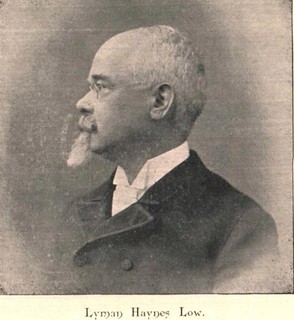 Lyman Haynes Low (1844-1924), was born on July 22, 1844, at Boston, Massachusetts, son of Captain Francis Low (1795-1860) of Barre, and Reliance Cobb Burrill Low. He is a descendent of
great-grandfather Low born at Cape Ann in 1720. His grandfathers of both parents served in the Revolutionary army. Born in Vernon Place, Charter Street, Boston, Massachusetts on July 22, 1844. His
parents soon moved to Chelsea where he grew up as a young child.
Lyman Haynes Low (1844-1924), was born on July 22, 1844, at Boston, Massachusetts, son of Captain Francis Low (1795-1860) of Barre, and Reliance Cobb Burrill Low. He is a descendent of
great-grandfather Low born at Cape Ann in 1720. His grandfathers of both parents served in the Revolutionary army. Born in Vernon Place, Charter Street, Boston, Massachusetts on July 22, 1844. His
parents soon moved to Chelsea where he grew up as a young child.
As a youngster he collected coins when the nickel Flying Eagle cent was minted in 1856. At the outbreak of the Civil War he sold his small collection for $5.00. He took a numismatic hiatus for seventeen years returning to the field of collection in 1878. During the Civil War he served in the Company B, Thirteenth Massachusetts Volunteers.
Low wrote in his autobiographical sketch in the October/November 1908 issue of The Numismatist,
"In that year, [sic 1878], when a commercial traveller, I was sojourning in the West, on the Mississippi, just below St. Paul. Many foreign copper and silver coins were in circulation in that community, and I soon found myself making a collection of the various kinds I met with. By this means I became acquainted with three collectors in the town, and their hord[e]s were sufficient to rekindle the flame of twenty years previous. My ardor was thoroughly aroused, and the interest I took was intense! I dreamed and talked of coins incessantly; but I soon became rational, and launched into the subject in sober earnest.
"Almost immediately I began to sell as well as purchase. The captures, whether of pieces or customers, were not large or important. In the fall of 1879, after returning to New York after one of my trips, I passed the old store of Bangs & Co., on Broadway, opposite Astor Place, and read the bulletin at the door, "Coin Sale to-day". A few brisk steps took me up to the spacious rooms where the coins of the late Theodore Riley were displayed on those long, flannel-covered tables, which some of you perhaps remember. I attended the sale that afternoon and most of those that followed, whenever I was able to do so."
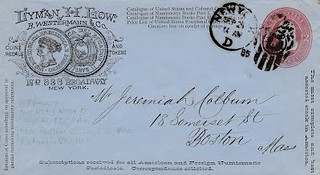 He was an active member of the ANS since May 18, 1880. His first advertisement in Numisma appears in the July 1880 issue. The exact same advertisement ran into the November 1881
issue. In January 1882 he revised the advertisement including siege pieces. He was busy acquiring coins he would eventually list at fixed prices selling them on December 25, 1882.
He was an active member of the ANS since May 18, 1880. His first advertisement in Numisma appears in the July 1880 issue. The exact same advertisement ran into the November 1881
issue. In January 1882 he revised the advertisement including siege pieces. He was busy acquiring coins he would eventually list at fixed prices selling them on December 25, 1882.
From 1883 Low professionally entered the coin business full-time, issuing his first fixed price lists from B. Westermann & Company, 838 Broadway, New York City. He became a member of the ANS. When he joined the Western Pennsylvania Numismatic Society (WPNS) he was still early in his career as a coin dealer. He became the librarian of the American Numismatic and Archaeological Society (ANS) in 1885 until 1891.
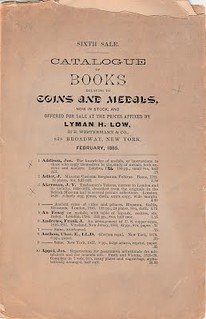
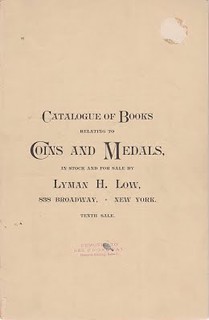
Low's first significant coin auction sale was that of the late Alexander Balmanno of Brooklyn, New York, comprising 1,064 lots, held on June 10, 1885. Previously, Balmanno had a coin auction sale ten years earlier on April 9, 1873 at Thomas Birch & Son. However, Low was to sell more from the Estate of Balmanno twenty years later on October 30, 1903.
In 1886, he published his classic work, Hard Times Tokens. This work was revised by him in 1899. Since then it has undergone several reprintings and expanded updated editions by later numismatists. The most significant being those of Edgar Holmes Adams, known as the plated edition, and that of Russ Rulau, called the complete and enlarged edition.
September 1, 1887, he became the manager of the Coin Department of Scott Stamp & Coin Company, Limited until early 1896. Low compiled all the numismatic literature, fixed prices lists and eighteen coin auction catalogues, of which three merited Davis numbers : 913, 914, and 915.
n the January 1895 issue of The Numismatist, Augustus Goodyear Heaton wrote his classic essay, "A Tour Among the Coin Dealers," and Lyman Low at Scott's Stamp & Coin Company was on his tour itinerary.
"The Scott Stamp and Coin Company has become a conspicuous location on Madison Square, one of the handsomest centers of the metropolis. The stamp department occupies the large and deep first floor of the building and many clerks are employed. The coin department is in a basement floor nearly level with the pavement. Near the show window two or three young ladies are behind a counter, busy at desks, or showing any desired part of the coin stock of several large fireproofs [safes] to the customers. Many coin publications are on the counter.
Far in the rear, in a skylit office and numismatic library, is found Mr. Lyman H. Low, the manager. He is a scrupulously attired gentleman in middle life, with white hair, mustache and goatee, a military aspect, but with a brisk genial manner. He is a member of the American Numismatic and Archaeological Society of New York, one of the editors of the American Journal of Numismatics, and a man of great experience in the science and of sagacity in business."
He died on Saturday, February 16, 1924, at his residence, 28 Clinton Place, New Rochelle, New York.
His last catalogued coin auction, Part II of J. Coolidge Hill was sold by F. C. C. Boyd on April 4, 1924.
Low's coins were sold by Thomas Lindsay Elder on May 1-3, 1924.
Lyman Haynes Low was inducted into the ANA Numismatic Hall of Fame in 1972.
To read the complete article, see:
LOW, LYMAN HAYNES
(https://sites.google.com/a/numismaticmall.com/www/numismaticmall-com/low-lyman-haynes)
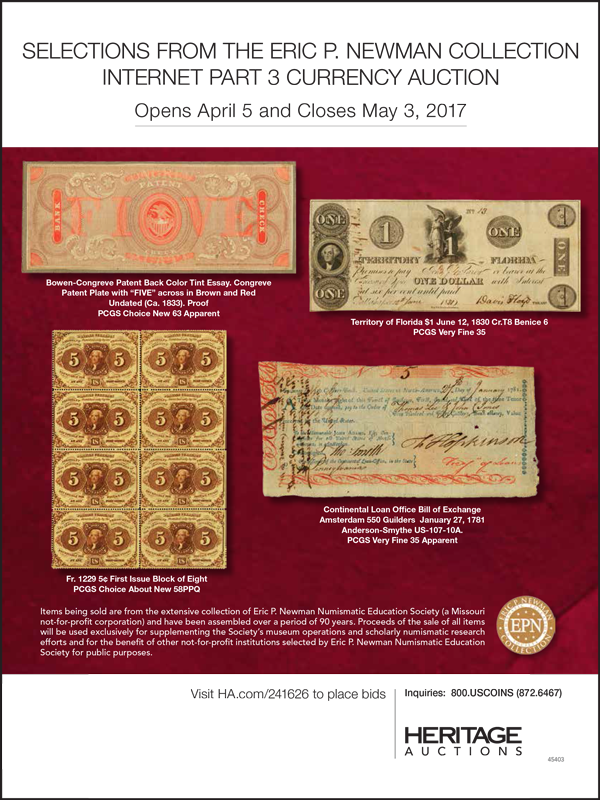
NUMISMATISTS EXAMINE TIME CAPSULE COINS
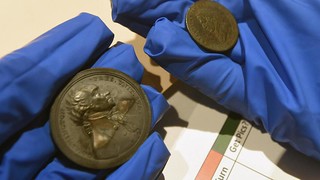 When Garrett Ziss, 13, held the 200-year-old half-cent piece, he felt a direct link to the days when Baltimore's Washington Monument rose on what was then the edge of the city.
When Garrett Ziss, 13, held the 200-year-old half-cent piece, he felt a direct link to the days when Baltimore's Washington Monument rose on what was then the edge of the city.
His imagination came alive: Had President George Washington's contemporaries held the same one? Had any of the holders fought in the War of 1812 in Baltimore's harbor?
Sitting around a table inside the Maryland Historical Society, the young numismatist joined local historians to inspect and record details about two dozen coins and medals discovered two years ago in the monument's two time capsules.
"These coins have been hidden away for 200 years," said Garrett, of West Chester, Pa. "The last people who held these coins were probably people who knew George Washington."
Uncovered during a massive renovation done for the Washington Monument's bicentennial, the coins and medals were stuffed inside a pair of time capsules: the cornerstone buried when construction began in 1815 and a cooper box sealed behind a bronze plaque a hundred years later.
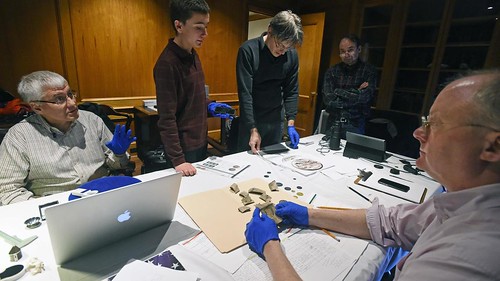
Garrett first saw the exhibit when he and his parents visited Baltimore for a coin show in late 2015. During their stay, the family stopped by the historical society to view the original "Star-Spangled Banner" by Francis Scott Key, and stumbled on the exhibit featuring the contents of the time capsules.
The boy, whose interest in coins was sparked about six years ago during a math lesson about currency, wanted to find out more about them. So he wrote to local historians, including Lance Humphries, director of the Mount Vernon Place Conservancy. Humphries assembled the group after Garrett's inquiry.
"We are just thrilled that the restoration really brought attention to this great history we have here," said Humphries, who led the monument's restoration. "Garrett's interest in these coins pushed us to a whole other level of documenting everything we had in these two time capsules."
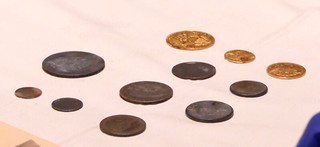
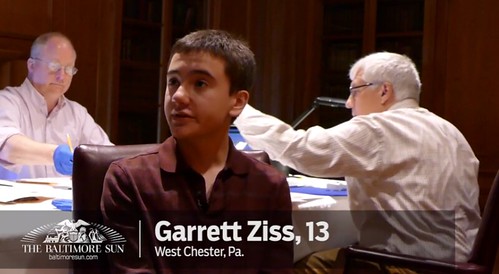
Garrett said he was eager to see the reverse sides of the items, not visible when they were on display, to find out how rare they each were.
Last week, he joined a coin photographer, Humphries and Joel Orosz, a Kalamazoo, Mich.-based coin historian, to catalog the coin sets buried in Baltimore in 1815 and 1915.
Orosz called the time capsules' contents "an extraordinary find" that also contain a few mysteries. The historians are going to research why the Baltimoreans who assembled the 1815 time capsule included a medal imprinted with a bust of the British Duke of Wellington as well as one imprinted with a bust of Washington.
They also want to know the extent of the involvement of the prominent Baltimorean Robert Gilmor Jr., considered one of the "founding fathers" of coin collecting, in assembling the earlier time capsule.
The 1815 coins, with a face value of $19.411/2, included all of the denominations minted at the time, including a half-cent, dime and a $5 gold coin, known as a half-eagle. Some could be worth more than a $1,000, but the values have not been determined.
Paul Rubenson, the historical society's exhibit manager, said watching the display spark Garrett's interest and, in turn, produce an academic study brings history to life.
"This is the ultimate outcome: We always hope when people come in the door that what we put out will spur further interest and branch off in different directions," he said. "This is just exponential."
To read the complete article, see:
200-year-old coins spark study by 13 year old, historians
(www.baltimoresun.com/news/maryland/baltimore-city/bs-md-ci-old-coins-20170402-story.html)
THE BOOK BAZARRE
MINT UNVEILS 2017 AMERICAN LIBERTY SILVER MEDALS
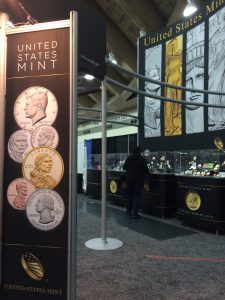 On Wednesday, March 29, the United States Mint announced that it will begin selling its 2017-dated American Liberty $100 gold coin on April 6.
On Wednesday, March 29, the United States Mint announced that it will begin selling its 2017-dated American Liberty $100 gold coin on April 6.
The next day, Thursday, March 30, the Mint unveiled a beautiful new set of silver medals based on the designs of the gold coin. The medals were unveiled in a revolving turntable display in the Mint’s impressive exhibit at the Whitman Coin and Collectibles Expo, held in the Baltimore Convention Center.
Each of the .999 fine silver medals will be struck at a different mint facility—Philadelphia, Denver, San Francisco, or West Point—and each sports a distinctive finish: Uncirculated (“Burnished”), Proof, Reverse Proof, or Enhanced Uncirculated. This is similar to the set of silver Kennedy half dollars struck to mark the 50th anniversary of that coin in 2014.
I spoke with James Pressley, the Mint’s retail sales manager, at the Baltimore Expo. He told me that mintage and household ordering limits aren’t being publicized yet. Stay tuned for more details.
“Show us 21st-century Liberty,” said CCAC member Donald Scarinci in support of the chosen design. “Show us Liberty in a new and contemporary way, and let’s shed these Civil War symbols, these hundred-year-old symbols that really don’t have the emotional impact to contemporary Americans that they did 100 years ago.” Scarinci praised the Mint for moving forward, beyond rehashing old classic coinage designs. “Weinman and Saint-Gaudens are dead; let’s get over it,” he said. “It’s as impossible for them to do contemporary designs as it is for contemporary artists to redo their designs without looking trite and imitative, so let’s not. We don’t need to. We need to find Liberty in a new and modern way for the 21st century.”
Committee member Jeanne Stevens-Sollman thanked the Mint’s artists for their work. “I want to talk about the obverse and I also want to compliment the Mint staff artists that presented this portfolio, because it is just really outstanding for the most part and I was very happy to see the diversification that you gave us. It’s very wonderful. Thank you.”
Committee member Robert Hoge observed, “I have to say I think this is one of the most beautiful suites of images that I’ve seen in any presentation. I’m excited that we have so many new, wonderful images of Liberty, and I wouldn’t be disappointed with any of these. I do have to say I think Number 8 is my favorite, along with a lot of the rest of you. We’ve talked about whether or not these images are neoclassical or classicizing. Really there are only a few that are not. I think we probably need to accept that, because the whole idea of Liberty actually is a classical concept, so I wouldn’t worry about it.”
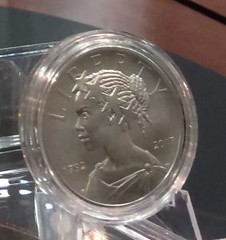
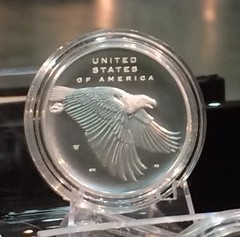
To read the complete article, see:
EXCLUSIVE! New 2017 American Liberty Silver Medals Unveiled at the
Whitman Baltimore Expo (http://news.coinupdate.com/exclusive-new-2017-american-liberty-silver-medals-unveiled-at-the-whitman-baltimore-expo/)

DICK JOHNSON VISITS THE YALE ART MUSEUM
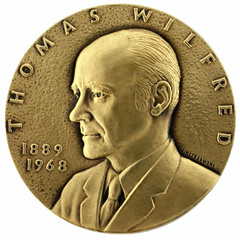
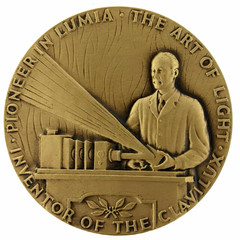
I visited the Yale Art Museum last week for an exhibit of Lumia, a showing of colored lights in motion. An artist, Thomas Wilfred, in the 1920s invented a device, he called the Clavilux which projected multiple light beams which changed color, shape and flow in harmony. The result is more than a kaleidoscope, they actually dance in a prescribed manner which is both charismatic and spellbinding. A viewer is drawn into a mesmerizing visual delight.
So what has this to do with numismatics? Well, his portrait is found on a fine art medal with his device shown on the reverse, enhanced with a bold satin brown patina. A medal – drawn from Yale’s own medal collection -- was on exhibit in its own case in the exhibit, but what is more interesting is the story behind the medal. It was commissioned by his son, also named Thomas Wilfred who chose the most prominent portrait sculptor-medallist at the time, Joseph Kiselewski (1901-1988) to prepare the models for his father’s medal.
Thomas Wilfred the younger inherited not only his father’s quiet, unassuming ways and appreciation of fine art in addition to his father’s estate. He expressed that interest in collecting American fine art medals and medals from the Paris Mint. He was active in New York City numismatics, attended all the conventions, often a committee member as well as a member, and onetime president of the New York Numismatic Club.
Tom was a close friend. We shared a mutual interest in art medals. My wife Shirley and I visited Tom and Mary at their home in northern New Jersey on several occasions. Professionally Tom was a chemist. When he retired he moved to Gap, Pennsylvania and became interested in steam engines, acquiring one of his own formally used on a rural farm. He joined a club of steam engine collectors who maintained of fleet of these, showing them at county fairs.
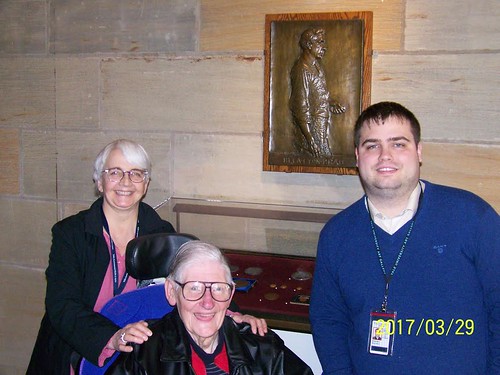
June Miller, Dick Johnson, Ben Hellings
While I was at the Yale Art Museum I could not resist visiting the Coin and Medal Department. I met June Miller again and her new assistant, Benjamin Hellings, who had to finish a class he was teaching on Roman numismatics to Yale students. June is always charming, the helpful director of the department who has intimate knowledge of the museum’s collections.
I had no specific research in mind, but did ask to see the Museum’s collection of the Society of Medallists issues. The storage cabinets in the department are the finest in America, all brand new, as are all the related equipment. June knew their Society of Medallists issues ended at #100. missing only the last 29 issues.
The department’s Study Room where Ben conducts his classes is named after a University’s alumnus, Bela Lyon Pratt, the sculptor-medallist. Pratt is known for the U.S. $5 and $2.50 gold coins plus a dozen or so medals. I had sold a Bela Lyon Pratt Plaque when I was in the auction business. The buyer was New York City collector Tony Terranova, who agreed to sell it the Museum. Before I left the area, June, Ben and I posed for a picture under that Pratt Plaque.

NUMISMATIC NUGGETS: APRIL 2, 2017
Roman Empire - Alexandria - Grazing Horse
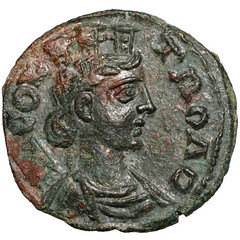
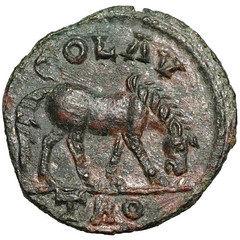
Alexandria, pseudo-autonomous minting under GALLIENUS (253-268)
AE, 5.41g, 21mm
Mint: Troas, Alexandria
Obverse: COL - TROAD, bust of Tyche with mural crown, Vexillum is behind
RV: COL AV / TRO, grazing horse towards right
To read the complete lot description, see:
63. Roman Empire - Alexandria,
pseudo-autonomous minting under GALLIENUS (253-268) AE, Troas, Tyche, grazing horse
(https://auction.catawiki.com/kavels/10963083-roman-empire-alexandria-pseudo-autonomous-minting-under-gallienus-253-268-ae-troas-tyche-grazing-horse)
Islamic Half Dirham Square in Silver
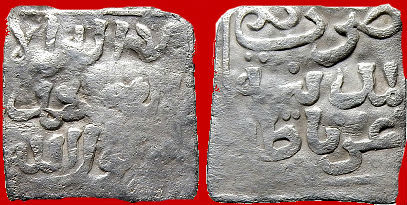
Al-Andalus – Nazari period of Granada (1250-1492), 1/2 dirham square in silver (0.52 g, 11 mm), Islamic, medieval, anonymous, no date and mint of Granada.
Good preservation, beautiful silver tone. Scarce coin, minted in Granada (perfectly readable). Very nice piece in hand.
To read the complete lot description, see:
27.
Al-Andalus – Nazari period of Granada (1250-1492), 1/2 dirham square in silver (0.52 g, 11 mm), Islamic, medieval, anonymous, no date and mint of Granada.
(https://auction.catawiki.com/kavels/11021593-al-andalus-nazari-period-of-granada-1250-1492-1-2-dirham-square-in-silver-0-52-g-11-mm-islamic-medieval-anonymous-no-date-and-mint-of-granada)
1820 Miles Distant from London Medal
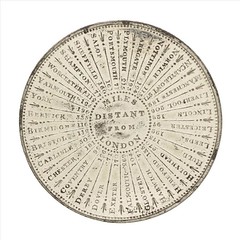
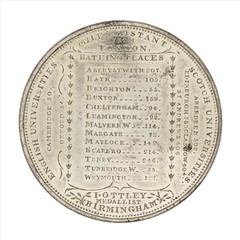
Description: One 1820 Miles Distant from London Medal.
To read the complete lot description, see:
Lot 458A: 1820 Miles Distant from London Medal (http://www.invaluable.com/auction-lot/-1-c-10443B3AF6)
1846 Free Trade Anti-Corn Law Medal
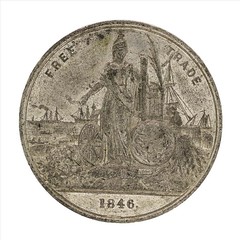
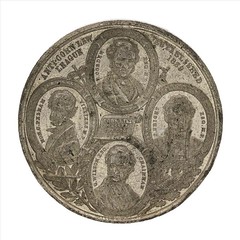
Description: One 1846 Free Trade Anti-Corn Law League Medal.
From Wikipedia:
The Anti-Corn Law League was a successful political movement in Great Britain aimed at the abolition of the unpopular Corn Laws, which protected landowners’ interests by levying taxes on imported wheat, thus raising the price of bread at a time when factory-owners were trying to cut wages.
To read the complete lot description, see:
Lot 482A: 1846 Free Trade Anti-Corn Law League Medal (www.invaluable.com/auction-lot/-1-c-E7B4DB0868)
1856 Pope Pio IX Medal
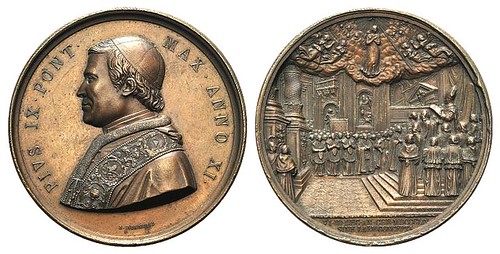
Papal, Pio IX (1846-1878). Æ Medal 1856 (44mm, 40.46g, 12h), opus G. Bianchi. PIVS IX PONT MAX ANNO XI, Bust l. R/ VI ID DEC AN CHR MDCCCLIV SINE LABE CONCEPTA, The Pope seated l., reading out the dogma. Bartolotti E 856. Minor scratches on obv., small edge nick, about EF; ;
To read the complete lot description, see:
777 Papal, Pio IX (1846-1878). Æ Medal 1856 (44mm, 40.46g,
(https://auctions.bertolamifinearts.com/en/lot/13161/papal-pio-ix-1846-1878-medal-1856-/)
French Agriculture Medal
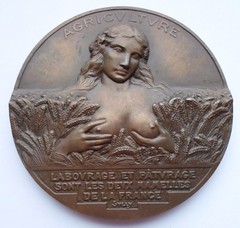
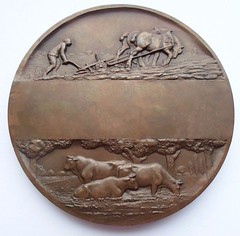
Obverse : bust of nude woman figuring agriculture, above a sentence by Sully, signed by french medallist THENOT
Reverse : plowman at work on field with draft horses, cow and bulls
Diameter : 68 mm or 2,67 inches
Weight : 170 grams or 6 ounces
Metal : bronze
Edge marks : "bronze" with cornucopia Paris Mint foundry mark
To read the complete lot description, see:
RARE FRENCH AGRICULTURE ART MEDAL by MAURICE THENOT
(www.ebay.com/itm/RARE-FRENCH-AGRICULTURE-ART-MEDAL-by-MAURICE-THENOT/311828356439)
1934 NSDAP Hall of Honour Medal
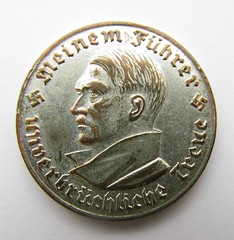
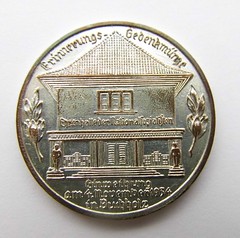
Third Reich. Medal 1934 NSDAP Hall of Honour Inauguration at Buchholz Adolf Hitler. Silvered bronze, 35,5 mm. Rare. 100 % original.
To read the complete lot description, see:
95. Third Reich - Medal 1934 NSDAP Hall of Honour Inauguration
at Buchholz Adolf Hitler (https://auction.catawiki.com/kavels/10959941-third-reich-medal-1934-nsdap-hall-of-honour-inauguration-at-buchholz-adolf-hitler) 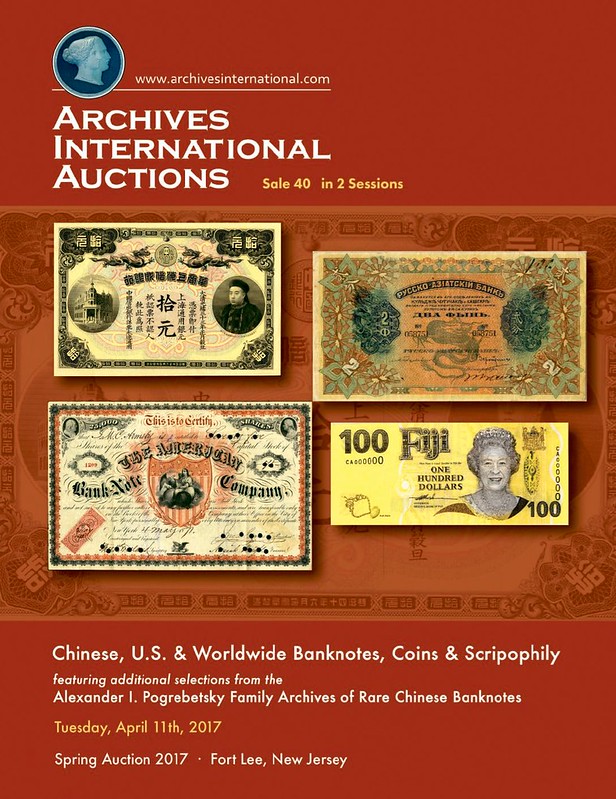
BICYCLE MEDALS
1909 Century Road Club Medal
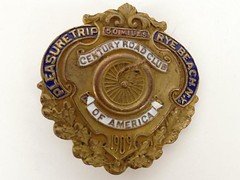
Lot (3) bicycle medals. Includes 1909 Century Run, 1903 Maple-Princeton Century Run, 100 Century Road Club America. Good condition.
To read the complete lot description, see:
Lot 508: Bicycle Medals (www.invaluable.com/auction-lot/-1-c-97F48B8B95)
North Hudson Wheelmen Medal
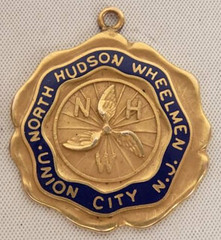
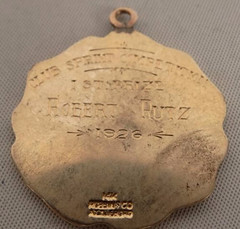
14 Karat gold bicycle medal "North Hudson Wheelmen/Union City N.J.". Good condition. Provenance: James Carpenter Collection Part II.
To read the complete lot description, see:
Lot 173A: Bicycle Medal (www.invaluable.com/auction-lot/-1-c-76848BE8C8)
For more information on the sale, see:
26th Annual Bicycle Auction
(www.copakeauction.com/auction/26th-annual-antique-classic-bicycle-auction/)
1893 Diamond Tournament Bicycle Medal
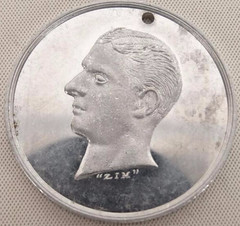
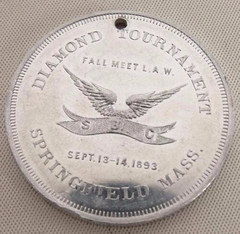
Lot (2) bicycle medals L. A. W. Sept. 1893, Diamond Tournament, Springfield Mass. First and second prize. Both coins marked "Zim". Good condition. Case included. Provenance: James Carpenter Collection Part II.
To read the complete lot description, see:
Lot 162A: Bicycle Medals (www.invaluable.com/auction-lot/-1-c-DC44F9190D)

1818 WASHINGTON MARKET CHOWDER CLUB TOKEN
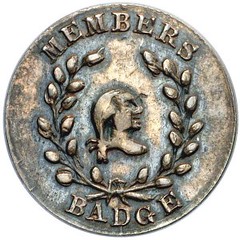
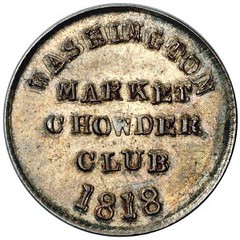
To read the complete article, see:
The New York Base Ball Club (a.k.a. Washington BBC, Gotham BBC)
(https://ourgame.mlblogs.com/the-new-york-base-ball-club-a-k-a-washington-bbc-gotham-bbc-4ed602ea9e5a)
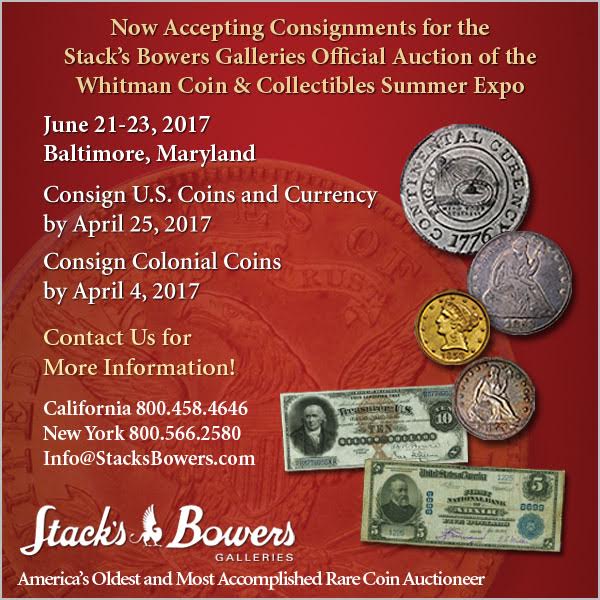
WAYNE'S NUMISMATIC DIARY: APRIL 2, 2017: PART 1
Baltimore Spring Expo
I took the afternoon off Thursday March 30, 2017 and pointed my car north toward Baltimore to visit the Whitman Spring Expo at the Baltimore Convention Center. I'm lucky to live and work close to
such a major regional coin show. It's an opportunity to meet numismatic friends old and new from all over.
I'd grabbed some lunch and travelled up I-95 and parked in a lot next to the Sheraton Inner Harbor Hotel. I know my way around the convention area pretty well, a benefit for all of holding a show in the same place each time. I passed through the Sheraton and convention center lobbies, registered and got my name tag, then entered the bustling bourse area.
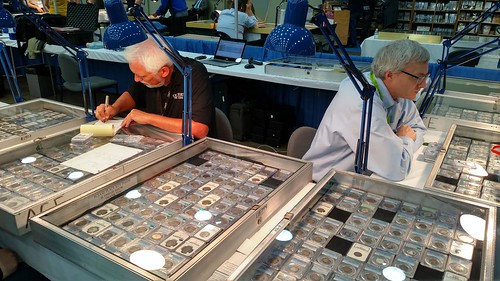
Gerry Fortin and Len Augsburger
My initial plans were to meet up with Len Augsburger to discuss some Newman Numismatic Portal business, but he was busy with a customer at Gerry Fortin's table. Every table visited that afternoon was busy with customers.
Coin Boards
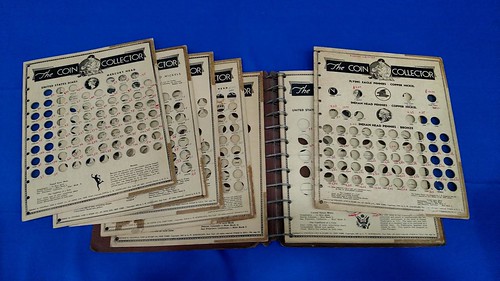
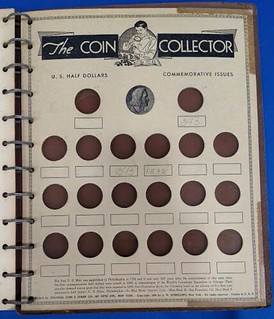 I crossed over to the other side of the hall and David Lange was just finishing up with a customer at the NGC table. He showed me a rare Commemorative Half Dollar coin board he'd
acquired at the show. It was part of a set of coin boards in a brown leatherette ringed binder embossed with The Coin Collector logo. The other boards were well worn, but the commemorative one was
unused. While he worked with the next customer I took these photos.
I crossed over to the other side of the hall and David Lange was just finishing up with a customer at the NGC table. He showed me a rare Commemorative Half Dollar coin board he'd
acquired at the show. It was part of a set of coin boards in a brown leatherette ringed binder embossed with The Coin Collector logo. The other boards were well worn, but the commemorative one was
unused. While he worked with the next customer I took these photos.
Books, Tokens and Medals
I didn't take pictures this time, but next I visited Charlie Davis, who was still getting his numismatic literature booth set up. Sharing his table was Neil Musante, author of the new two-volume
book set on Medallic Washington.
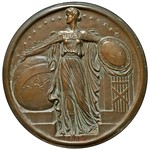 Across the aisle was Paul Cunningham's table. Dave Schenkman was talking with him and I joined in. We briefly discussed the "Maryland Mystery Plaque" mentioned in earlier
E-Sylum issues.
Across the aisle was Paul Cunningham's table. Dave Schenkman was talking with him and I joined in. We briefly discussed the "Maryland Mystery Plaque" mentioned in earlier
E-Sylum issues.
I think my next stop was Tony Terranova's table, where I wished him a Happy Birthday. I'd heard some friends had surprised him with birthday cake during the coin auction the night before. He was amused and smiled.
At the next table, busy with customers was John Kraljevich. With him was Erik Goldstein, Curator of Numismatics at Colonial Williamsburg. We chatted a while about a nice New York Yacht Club medal in JK's case.
I got my camera out at my next three stops. I realized later they were all named Dave.
Dave Wnuck
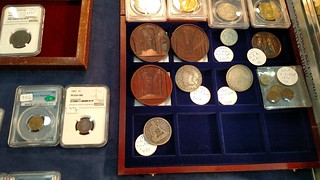
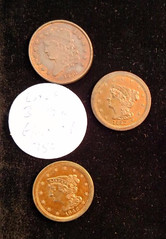
Here are some of the goodies in Dave's case. On the right are three electrotype half cents (the label didn't show well in the picture).
David Sundman
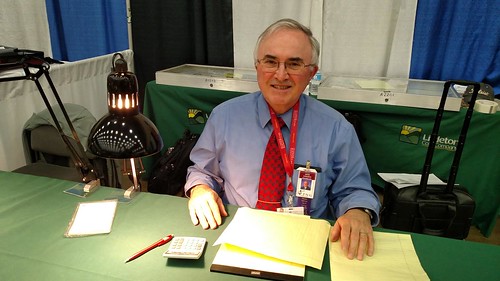
I caught up with David Sundman manning the Littleton Coin Company table.
Dave Bowers
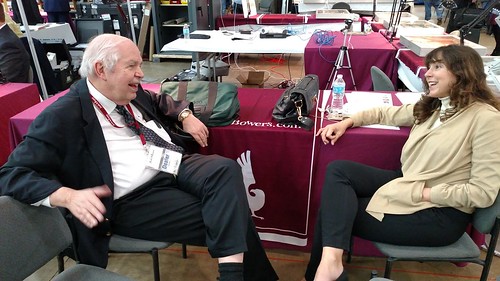
Dave Bowers and Catherine Canuti
On Thursday and Friday Dave Bowers was at the Stack’s Bowers Galleries booth, dividing his time between there and the Whitman Publications display across the aisle. He was holding court, so to speak, with a continuing stream of people coming by to say hello, chat, or to have a book or two signed. This wasn’t planned. It started when Dave sat down and people started coming over. Keeping him company part of the time was Catherine Canuti of Collateral Finance Corporation (CFC).
I was delighted to take a chair and chat with Dave, Catherine and many who came by. Dave helped me sign up new E-Sylum readers including Catherine, Richard August, who has been collecting and studying colonial coins since 1960, and Frank Robinson, a polymath, long-time numismatist, and author of several books. If I had stayed there all day I probably would have a couple dozen names of new subscribers!
It was a wonderful way to spend part of the afternoon. We had a lot of laughs over stories of West Los Angeles, Beverly Hills, Trump Tower, the Playboy Mansion, coin shows, the future of the American Numismatic Association, coin dealer side hustles, and free VIP tickets to see and meet Elvis Presley at one of his shows. And of course, we talked about the hobby past, present and future.
Dave Bowers writes:
As you were part of our “floating seminar” at the SBG bourse table, you know that there is a lot of enthusiasm among traditional collectors and dealers. I think there is more interest in numismatic research, history, and basic enjoyment of coins, tokens, medals, and paper money than ever before. The market is not at the level of what it was two or three years ago in certain categories, mainly those appealing to investors, but the solid core of basic enthusiasts is still there. I bought two rare Vermont coppers and one rare IMMUNE COLUMBIA copper Wednesday and was happy to get them.
Later I caught up with the crazy-busy Mary Burleson of Whitman who was attending to multiple items of business related to the show. We had a nice chat about coin shows and the Newman Numismatic Portal. Dennis Tucker joined us for a bit before he had to head off to the airport.
ANS Table
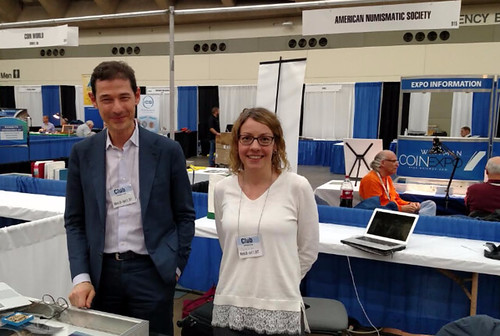
Gilles Bransbourg and Catherine DiTuri
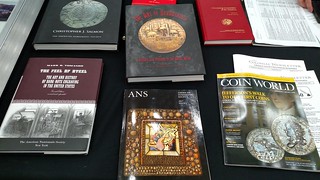 It was a day of Daves and a day of Catherines. I had a nice visit with Catherine DiTuri of the American Numismatic Society. She was manning the ANS booth with Gilles Bransbourg. While
Gilles chatted with a potential new member, Catherine and I reminisced about the now-closed-for-renovations Waldolf-Astoria Hotel and this year's ANS Gala.
It was a day of Daves and a day of Catherines. I had a nice visit with Catherine DiTuri of the American Numismatic Society. She was manning the ANS booth with Gilles Bransbourg. While
Gilles chatted with a potential new member, Catherine and I reminisced about the now-closed-for-renovations Waldolf-Astoria Hotel and this year's ANS Gala.
Other folks I spoke with that afternoon included Mark Ferguson, Gerry Fortin, Joe Esposito and Julian Leidman. I also eventually caught up with Len Augsburger.
Mary Lannin
Out in the lobby I spotted Citizen's Coinage Advisory Committee Chair Mary Lannin sitting at a table and sat down to join her. She was with Ellen Haake, mother of E-Sylum advertiser Shanna Schmidt. I learned that Shanna has a blog on her web site and planned to sign up. Mary recently moved from California to Washington, D.C. and we discussed some of the local area coin clubs. She'll be my guest at a future Nummis Nova meeting.
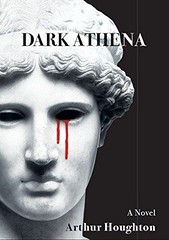 Mary told us how she'd recently accompanied her friend (and fellow Seleucid coin expert) Arthur Houghton as he researched his forthcoming novel at the National Cryptologic Museum at Ft.
Meade, MD. Arthur's earlier book Dark Athena was reviewed in The E-Sylum in October 2016.
Mary told us how she'd recently accompanied her friend (and fellow Seleucid coin expert) Arthur Houghton as he researched his forthcoming novel at the National Cryptologic Museum at Ft.
Meade, MD. Arthur's earlier book Dark Athena was reviewed in The E-Sylum in October 2016.
Another fun topic we somehow drifted into were dreams. Dreams of frustration where you walk and walk but never seem to get anywhere; dreams of panic where you find yourself totally unprepared, like arriving in class for a test you'd forgotten to study for. I recalled a dream about being in the attic of my childhood home and finding a door I'd never known was there, following it to stairway that wasn't there either down to a basement room I hadn't known, only to find my daughter sitting there doing her homework. Coin dreams didn't come up, but I remember one childhood dream where I had some quarters in my hand, but instead of eagles there were bats, and the coins turned into bats and flew away. Weird.
It was soon time for me to fly away myself and get ready for the evening event - a dinner with my northern Virginia numismatic group and several out-of-town friends. See the next part of my diary for the rest of the story.
To read the earlier E-Sylum articles, see:
QUERY: WHO MADE THIS MARYLAND MYSTERY PLAQUE? (www.coinbooks.org/v20/esylum_v20n10a18.html)
BOOK REVIEW: DARK ATHENA (www.coinbooks.org/esylum_v19n41a06.html)

WAYNE'S NUMISMATIC DIARY: APRIL 2, 2017: PART 2
Nummis Nova 2017 Baltimore Dinner
Regular readers know my Numismatic Diary includes accounts of the monthly dinner meetings of my Northern Virginia numismatic social group, Nummis Nova. Members take turns hosting a meeting at
restaurants throughout the region. E-Sylum readers join us on occasion, but syncing up trips with our regular second Tuesday meeting night doesn't always work out.
To remedy this, last year we thought of holding a dinner in conjunction with the Whitman Baltimore coin show. Q. David Bowers, a longtime E-Sylum reader and supporter, was our first invitee. Dave, our members and I invited other out-of-towners until we filled a room at one of Dave's favorite Baltimore restaurants, the one closest to the Convention center, Morton's.
Dave adds:
If you go into any Morton’s (it is part of the Landry’s chain) along one wall they have wire-fronted cases with bottles of wine, etc., say a half dozen or so, and a metal plaque below with a patron’s name. If you lived in Baltimore and were into such things, when you dined at Morton’s you could ask the waiter to bring you a selection from your cabinet. A few years ago me and numismatic friends were at a Morton’s near Chicago. There on a prominent bin with contents was the label TIGER WOODS.
“Does Tiger Woods eat here?” I asked.
The manager replied, “No, but if he ever comes we have his favorite wines.”
Anyway, our Morton's dinner was so much fun we decided to do it again this year, and it just may become a tradition. Member Eric Schena volunteered to make the arrangements with the restaurant, and we secured the room reservation months ahead.
Nummis Nova regulars were Roger Burdette, Joseph Esposito, Wayne Herndon, Wayne Homren, Tom Kays, Julian Leidman, Jon Radel, Eric Schena and David Schenkman.
Our out-of-town guests were: Len Augsburger, Dave Bowers, Mary Burleson (President of Whitman Publications), Charles Davis, Rob Gartenberg, ANA President Jeff Garrett and his son Ben, Erik Goldstein (Curator of Numismatics at Colonial Williamsburg), John Kraljevich, Neil Musante, Joel Orosz and Dr. Ben Swanson.
"Out-of-town" doesn't quite apply to Ben Swanson, who lives three blocks from the restaurant.
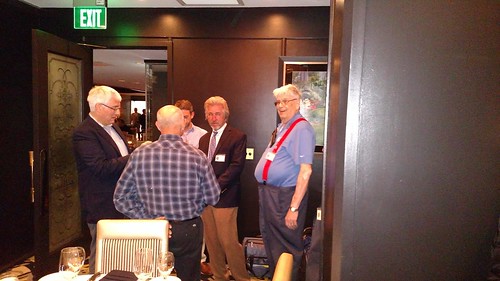
Joel Orosz, Ben and Jeff Garrett, Julian Leidman. back to camera: Rob Gartenberg
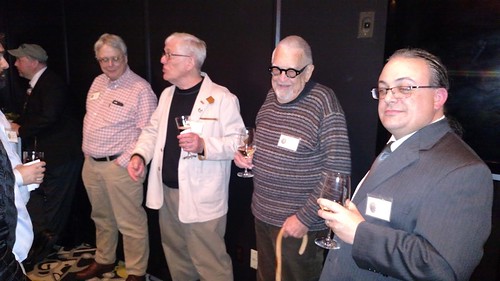
Tom Kays,Jon Radel, Dave Schenkman, Ben Swanson, Eric Schena
Joe Esposito writes:
I sat between Joel Orosz and Wayne Homren. Joel and I had a delightful discussion on a number of topics, including the paradoxes of Thomas Jefferson, the research and writing of his new book, 1792: Birth of a Nation’s Coinage, and his earlier work on Frank Stewart and the U.S. Mint. Wayne talked about his early numismatic book collecting days in Pittsburgh. Mary Burleson and Tom Kays added to the conversation on a range of issues, and the nearly four-hour dinner seemed to embody an anthology of historical and contemporary stories.
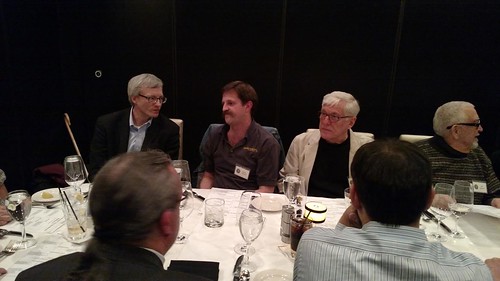
Len Augsburger, Wayne Herndon, Dave Schenkman, Ben Swanson.
Backs to camera: Eric Schena, John Kraljevich
Len Augsburger writes: writes:
"I sat next to Wayne Herndon and had a fascinating discussion about the coin and currency supply business. Wayne delivers a staggering 20 tons (not a typo) of books, holders, supplies, you name it, to major shows. His business, Wizard Coin Supply, owns its own semi and Wayne is an expert on truck operator licensing and regulations in virtually all 50 states. He is equally adept at identifying the best carrier (UPS, USPS, FexEd) for his entire product line, depending on the item sold and where it’s going. It’s almost more about logistics than coin supplies, but of course all we see on the customer side is the actual product, and one never thinks about all the backend support required to make that book you want appear on the coin show floor.
"My introduction to Wayne was buying a coin scale some years ago, and Wayne personally handled the email all the way from order placement through delivery confirmation. I’m sure he has scaled way up since then, but I always appreciated the personal service for even a nominal purchase."
I sat between Joe Esposito and Neil Musante. We talked of many things numismatic and not, including Neil's Medallic Washington book, business risk, my acquisition of the American Journal of Numismatics publisher's overstock, and comedian Milton Berle.
It was a memorable evening. I'm quite lucky to have so many friends in our shared hobby, and it was great to take some time out just to spend some time together. Here are some final words from Tom Kays:
The second annual, Nummis Nova Dinner at the Whitman - Baltimore Spring Expo began with Joe Esposito handing out limited edition, collector buttons of the dinner, and Eric Schena handing out name tags with Lord Baltimore’s silver as the logo, in deference to our dining location. Morton’s Steak House is attached to the Sheraton Hotel at Baltimore’s Inner Harbor, and I arrived early, watching for folks to show up.
I delivered to Eric Shena his Montgomery Blair (Lincoln’s Post Master General), Russian coin envelopes as discussed in the last two E-Sylums. Seated between Julian and Mary, I could be a pest and talk down the table toward the Garretts and Dave Bowers, or over toward Joe, Wayne and Neil Musante. Ben Garrett is a coin dealer from Sarasota, Florida, and we talked about local eateries the tourists don’t know about down Sarasota way. Ben once worked for a Third-Party Grading (TPG) service as a grader. I am still amazed that anyone can really tell the difference between MS-69 and MS-70 grades, but Ben can, and does well doing so.
Talk wended around to the idea that Third Party Grading services need “the next big thing” to help them keep coins coming in for their considered opinion. After the “Green Bean” and other such schemes, we don’t really know what the population of certain rare coins are, because dealers would break out and resubmit the same coin nine or ten times in a row, hoping for one numerical grade higher, each time the grading service sees it. TPGs might be erroneously tracking nine of the identical grade coins, yet one fateful Monday morning before having wake-up coffee, a grader would see the identical coin again, in a different light, and rate it up point. So, one coin that statistically should be the lower grade nine times out of ten, stops returning once a higher grade is given.
Dave recently wrote about the Sheldon Grading scale and he told us it was based on prices of large cents back about seventy-five years ago. A grade of VF-20 might trade at $20 and an EF-40 would trade at double the price of the VF-20. If VF-20s rise to $30 in the market place the EF-40 would go for $60. The scale topped out at the lofty price of 70 times what a perfect coin should bring, over the basal state. We know prices today don’t cooperate in a linear fashion, since Sheldon set us the seventy-point scale. Rare, near perfect coins may be exponentially more than basal state slugs. What makes sense would be a new “Metric Grading System” with a non-linear basis for rarity. We talked about a new, one hundred- point scale, so that every slabbed coin would need to be sent back for the decimal rating conversion, under convenient payment plans. We talked about that with smiles, thinking, no, that shouldn’t happen. But just in case TPGs need this collector complication to stay in business, I wanted to note that it started here, with us, at the Nummis Nova dinner in 2017. Let’s call the new, one hundred point, metric grading system, the “Nummis Nova Metric Coin Grading System TM .” Stay tuned to the E-Sylum to find out if this innovation may transform the coin business into greater profitability, or land on the scrap heap of less-than- ideal business strategies. I had to admit to Mary that I have been collecting coins for over fifty years and don’t own any entombed coins myself, having been happy with the 1970s, ANA Grading Standards and Photo-Grade, from back in the day.
Bunches of other stuff went by in discussion including Joe’s progress on documenting a particular meeting of VIPs, under the Kennedy Administration, Coin-Op devices (Dave Bowers other collecting love), which may soon appear in Whitman Publishing’s new edition of the “Mega-Red Book,” sports of the Crimson Tide, the fire under the I-85, private islands, book writing and e-publishing per Neil Musante, and what he would do different, if he had it to do all over again, touring Mount Vernon, coin design changes under French King Louis XIV (with examples present for show-and- tell), milestones in numismatic book digitization, and how nice it was to see everyone and share talk, stories and side dishes that accompanied a delightful meal. Some of us had to go to work the next day, and others got to attend the big show. The evening ended all too soon for me. 'Till next year, may we all meet again.
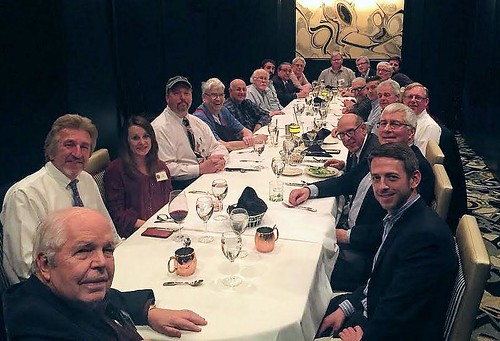
From head of table clockwise: Dave Bowers, Jeff Garrett, Mary Burleson, Tom Kays, Julian Leidman, Rob Gartenberg, Charlie Davis, John Kraljevich, Eric Schena, Jon Radel, Roger Burdette, Len Augsburger, Wayne Herndon, Dave Schenkman, Ben Swanson, Erik Goldstein, Neil Musante, Wayne Homren, Joe Esposito, Joel Orosz, Ben Garrett.
To read last year's Numismatic Diary, see:
WAYNE'S NUMISMATIC DIARY: MARCH 31, 2016: PART 3 (www.coinbooks.org/esylum_v19n14a23.html)
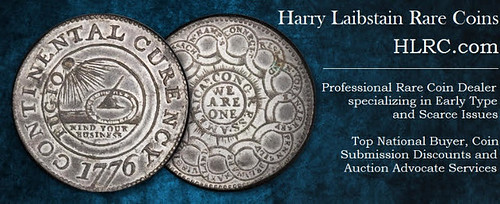
DOES COIN SHOW TRUE PORTRAIT OF JESUS?
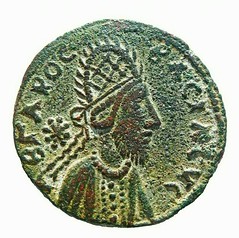 A coin depicting a bearded man with a crown of thorns could be the first and only true portrait of Christ.
A coin depicting a bearded man with a crown of thorns could be the first and only true portrait of Christ.
The bronze coin, dating from the 1st-century AD, has what an expert says is the only lifelike image ever made of Jesus .
Until now, the inch-wide coin was believed to show the face of King Manu who ruled the Mesopotamian kingdom of Edessa, now southeastern Turkey.
But after nearly 30 years of research, a leading Biblical historian argues that Manu and Christ were one and the same person.
Ralph Ellis says his find is ‘one of the most important discoveries in modern history’.
He has studied the lives of the pair and cross-referenced all recorded and anecdotal evidence.
Ellis says he is convinced ‘beyond any reasonable doubt’ that the same man was posthumously referred to by two names - ‘King Izas Manu’, and ‘(King) Jesus Emmanuel’.
If he is correct, the coin’s image is the one and only accurate portrait of Christ.
Although Jesus is the most painted figure in Western art, there was no physical description of him in the Bible.
The familiar image of him with long, flowing hair and white robe is a later invention dating from the 6th-century AD.
To read the complete article, see:
Is this the true portrait of Jesus? Historian claims ancient coin bears only lifelike image of
Christ (www.mirror.co.uk/news/world-news/true-portrait-jesus-historian-claims-10121347)
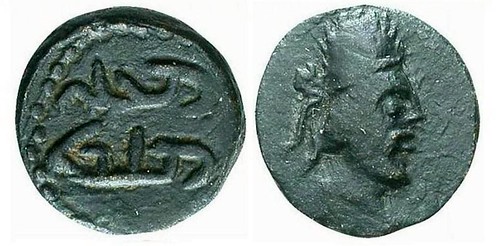
This coin features King Izas-Manu of Edessa – whom historian Ralph Ellis believes to be one and the same as Jesus Christ
Until now, the 24mm-wide coin was believed to show the face of King Manu who ruled the Mesopotamian kingdom of Edessa, in what is now southeastern Turkey.
But after nearly three decades of research, a leading biblical historian argues that Manu and Christ were one and the same person.
He has studied the lives of the pair and cross-referenced all recorded and anecdotal evidence.
And he concludes that the striking similarities between them cannot be a coincidence.
To read the complete article, see:
THE FACE OF
CHRIST? World’s only portrait of Jesus made during his lifetime may have been found on an ancient coin showing a bearded man with a crown of thorns
(www.thesun.ie/news/791924/worlds-only-portrait-of-jesus-made-during-his-lifetime-may-have-been-found-on-an-ancient-coin-showing-a-bearded-man-with-a-crown-of-thorns/)

ALL NEW £1 COINS RECALLED
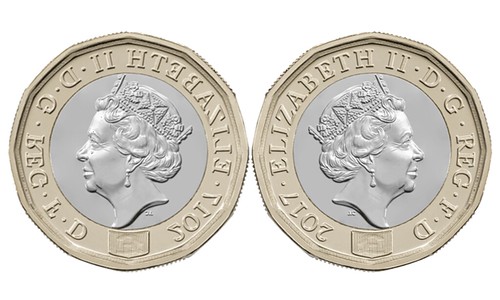
All new £1 coins are to be recalled following a request made by The Queen, who has asked that her head is to be featured on both sides of the new 12-sided coin.
Her Majesty is said to be ‘unhappy’ that despite being on the throne for 65 years, she still only appears on the reverse side of the coin.
All new £1 coins are to be recalled following a request made by The Queen, who has asked that her head is to be featured on both sides of the new 12-sided coin.
Her Majesty is said to be ‘unhappy’ that despite being on the throne for 65 years, she still only appears on the reverse side of the coin.
To read the complete article, see:
All new £1 coins recalled after The Queen requests that
she features on both sides of the coin (http://royalcentral.co.uk/other/all-new-1-coins-recalled-after-the-queen-requests-that-she-features-on-both-sides-of-the-coin-79588)

DIX NOONAN WEBB OFFER RARE PALESTINIAN BANKNOTES

A group of rare Palestinian banknotes issued during Britain’s League of Nations Mandate to administer the territory will be among the highlights of the auction of Paper Money to be held by Dix Noonan Webb, the international coins, medals, paper money and jewellery specialists, in London on 24 April 2017. All are dated 30 September 1929 and are colour trial notes which have come from the same private source.
The rarest of this extraordinary group is a Fifty Pounds note issued by the Palestine Currency Board which is almost impossible to find as an issued note but occasionally available as a specimen. Dix Noonan Webb has no record of a Fifty Pounds colour trial note being on the market in recent years and it is expected to fetch £30,000 to £40,000. The Ten Pounds note in the group is estimated at £12,000 to £15,000, the Five Pounds at £8,000 to £10,000 and the One Pound at £6,000 to £8,000. Colour trials are the stage before specimen notes are issued. At this point the design of the note has been agreed and the authorities then have to decide on the colours to be used. Colour trials are much scarcer than specimen notes.
The first paper money issued under the British Mandate for Palestine was dated 1 September 1927 and the second was on 30 September 1929 – the date on all the notes to be auctioned by Dix Noonan Webb. The Fifty Pounds, Ten Pounds and Five Pounds notes depict the Tower of Ramla or Ramleh, while the One Pound denomination has an image of the Dome of the Rock.
Britain was given a Mandate to administer Palestine by the League of Nations in 1922. Previously the territory had been part of the Ottoman Empire which collapsed following its decision to side with Germany during the First World War. The tensions between Arabs and Jews which remain in the Middle East today were in evidence throughout much of the period of British administration between the two World Wars. Britain terminated its Mandate in May 1948 following the decision of the United Nations General Assembly to partition Palestine.
For more information on the sale, see:
www.dnw.co.uk
THE BOOK BAZARRE
ARTICLE PROFILES SECOND STORY BOOKS' ALLAN STYPECK
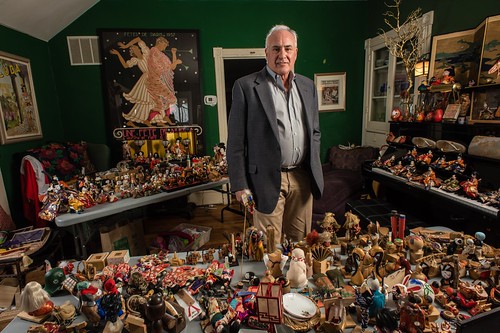
Stypeck is an impossible character, the kind of larger-than-life raconteur people say doesn’t exist inside the button-down Beltway. He’s the impresario of Second Story Books, one of the nation’s foremost appraisers of rare books and manuscripts, and a regular on “Chesapeake Collectibles” on Maryland Public Television.
Over his four-decade career, this “wanna see something cool?” gambit might have referred to an $11 million copy of John J. Audubon’s “Birds of America”; the mummified corpse of Gold Tooth Jimmy, a Detroit gangster; Henry Kissinger’s papers; dinosaur eggs; or a first edition of “The Great Gatsby,” complete with the telltale error “sick in tired,” on Page 205, which would let you know the book you’re holding is likely worth $100,000 or more.
Stypeck will bury you with all this in a blizzard of knowledge, history and detail.
“Before the Internet, booksellers ruled,” Stypeck says. “You did your research, and if you found that a book had been selling for $115,000, and you had only seen four of them in your career, then that’s what it was worth.”
But starting around 2000, when bookstores and collectors started going online, it turned out there were a lot of first editions of “In Cold Blood,” and an ocean of other “rare” books that had been on shelves or tucked away in basements all along.
Now anyone can type in the name of any book into any search engine and get a list of two dozen copies of your personal Rosebud, filtered by condition, price or binding. (On a recent day on AbeBooks.com, for example, there were 150 bookstores offering 63,000 first editions.)
This sudden availability made most prices drop precipitously, while it boosted the value of a few titles that were truly scarce. It was the B.C./A.D. of used-book selling.
On Stypeck’s desk is a massive 1614 edition of Sir Walter Raleigh’s “History of the World.” It’s probably worth $8,000 to $10,000. Before I can start marveling at this, he hands me a NASA manual for Apollo 11 — the technical guide for landing on the moon, signed by all three astronauts. That’s somewhere between $35,000 and $75,000.
“Remind me to tell you about the Night of the Two-Handed Bourbons,” he says of his time with astronauts. “Man, those guys drink.”
When he first started the bookstore, he says, he had a pet Burmese python, six or eight feet long, name of Ramone. “I used to sleep with him, and he’d cuddle next to my wrist or my jugular, because it was the warmest spot. Which is crazy, when you think about that.”
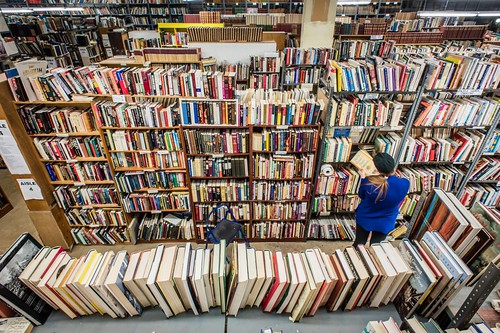
Born in Brooklyn in 1950, Stypeck was collecting everything — postage stamps, baseball cards, bottle caps — by the time he was 6. His father was Czech, and he grew up as a Catholic in a heavily Jewish neighborhood. “I learned about the Holocaust from listening to survivors,” he says, giving him a fascination with history and international affairs.
He went to college at American University, studying for the Foreign Service. Shortly after graduation, though, he and his first wife went on an antique-hunting trip for a friend in the business through New England. When he bought a batch of old books and noticed his friend’s D.C. customers snapped them up at higher prices, he knew he was onto something.
Three years later, in 1974, he bought Second Story Books in the Chevy Chase neighborhood, so named because it was on the second story of an office building in the 5000 block of Connecticut Avenue NW.
To read the complete article, see:
One of America’s foremost rare-book appraisers hangs on in the digital age
(www.washingtonpost.com/lifestyle/magazine/how-one-of-americas-foremost-rare-book-appraisers-is-surviving-in-the-digital-age/2017/03/29/75389df8-fac9-11e6-be05-1a3817ac21a5_story.html?utm_term=.a02e1cecd2f6)
BOOK TUNNEL ENTRANCE TO CHINESE BOOKSTORE
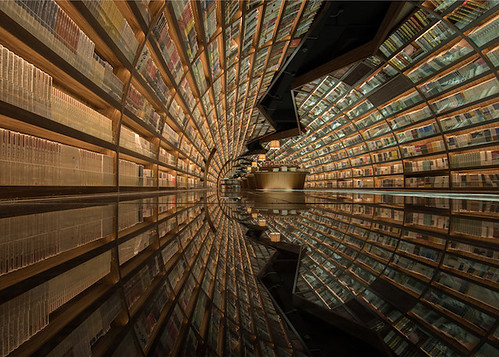
Literature lovers, here’s another shop to add to your bookstore bucket list. Located in Zhen Yuan, China, Yangzhou Zhongshuge has an interior design that feels like something out of the movie Inception. The dizzying space contains a grand optical illusion that you only see once you’ve set foot inside. Its lobby is a cavernous tunnel that most notably features striking black mirrored flooring. Together, the reflective ground and curved shelving creates the feeling that you’ve stepped into a perfectly circular room, making you question which way is up. Luckily, there’s help in finding the path forward. The shelves are split by a lightning bolt-shaped gap in the ceiling that leads you into the rest of the store.
Shanghai-based studio XL-Muse were the ones to come up with this clever configuration. Inspired by Yangzhou’s proximity to water, they designed the ground to mimic liquid. “In the past, guided by water, many literati and poets visited and gathered here,” they told Dezeen. “[The bridges] used to be the guiding factor of culture and commerce, and they represent that the bookstore is the bond between humans and books at the same time.” The mirrored flooring acts as a water current that draws you further into Yangzhou.
From the entrance, things get slightly less dramatic but nonetheless stunning. The reading room has a similar curvature and boasts giant white pillars that double as massive sculptures. They frame the books in intersecting ovals and create a space that’s both tranquil and awe-inspiring as you delve into the pages of a fascinating tale.
To read the complete article, see:
Black Mirrored Floor Makes Bookstore Entrance Look Like a Circular Tunnel of Books
(http://mymodernmet.com/optical-illusion-mirrored-flooring/)
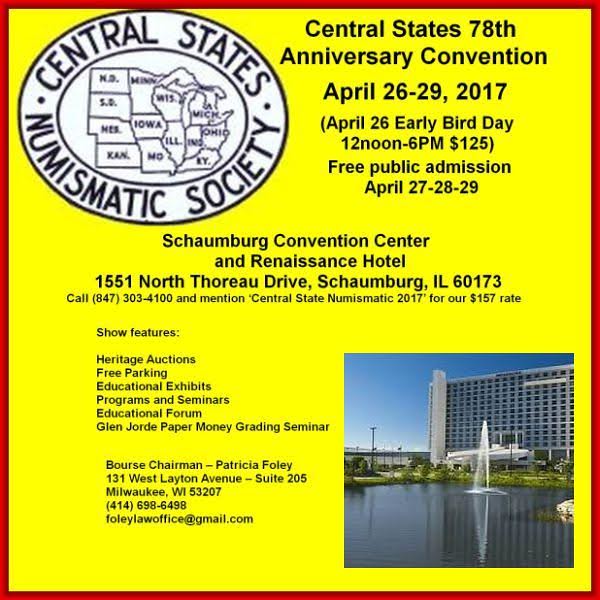
NEW INVISIBLE COINS ISSUED
Dear Collector
Following the success of the new plastic banknotes it has been decided to issue a range of invisible coins. The new issues are much lighter for shops, businesses and the public to handle and will not wear out as quickly as paper or metal.
They are impossible to counterfeit because no-one has seen the originals to copy and there should be fewer arguments about coin design. A spokesman said,
“The public have noticed that money tends to disappear and we feel this is a move in the right direction.”
There have been previous invisible coins:
- The Australian holey dollar was an attempt which only partially succeeded
- Evasive halfpennies
- Irish gonemoney
- German unsichtbarthalers
Collectors may pre-order these coins. Just send £100.00 in cash – no cheques or credit cards accepted.
Ron Guth adds: writes:
I've been searching for an unsichtbarthaler ever since I began specializing in German coins in 1988 and I can honestly say -- I've never seen one.
U. S. AND RUSSIA ANNOUNCE NEW JOINT CURRENCY
Reader Ken Barr writes:
WOW! Just found this announcement posted yesterday in the newsgroup news.announce.government.trump ...
U. S. AND RUSSIA ANNOUNCE NEW JOINT CURRENCY
Washington DC and Moscow Russia, April 1, 2017 (API)
United States Treasury Secretary Stvn Mnchn and Russian Finance Minister Igor Lyinhisazov jointly announced this morning a new currency to replace the United States dollar and the Russian ruble in international finance.
It will be named the "dolble" in the United States and the "rublar" in Russia, and will, according to Mnchn and Lyinhisazov, combine all of the positive features of each currency, and eliminate all the negative features of each currency as well. It is intended to compete directly with Far Eastern currencies such as the Chinese yuan, the Japanese yen, the South Korean yin and the North Korean yang. "The dolble will be a strong currency," proclaimed Mnchn, "backed by the full faith and credit of the United States, as well as the full faith of Russia, or whatever they are calling themselves this decade. Since Russia has no credit in the international markets, it will be be backed by faith alone there." "However," added Lyinhisazov, "the Russian people do produce a large amount of vodka, polonium 'cocktails' and nuclear missiles, so we expect our faith to be trusted. We reserve the right to turn any disbelieving country into a glowing smoking crater uninhabitable for thousands of years." The dolble/rublar is expected to be a stable currency, largely unaffected by trade balances and inflation, due to the steadying influences of the Federal Reserve System in the United States and the Friends of Putin Society in Russia.
Mnchn announced plans to eliminate the lower denominations of the dolble/rublar, namely the one, two, five and ten dolble/rublar notes. "President Trump doesn't think anything worth less than twenty dolbles is worth buying, so there is no need for these notes. As a concession to public transit, he will allow a one dolble coin to be produced, featuring vanquished opponent Hillary Clinton on the obverse and former Russian Federation / USSR / CIS / whatevertheycalleditbackthen President Boris Yeltsin on the reverse. It will inevitably be described as "as worthless as Hillary" in the United States and "as useless as Buymeadrink Yeltsin" in Russia. ", Mnchn predicted.
The designs of the new banknotes will also be changed dramatically. The new twenty dolble/rublar note will feature dual portraits of George Washington and Vladimir Lenin, the respective "fathers" of the United States and Russia on the face, with a large "TWENTY / ENTY-TWAY" on the back, along with a new crimson red color. These 'redbacks' are expected to be quite popular compared to the old 'greenbacks' according to Lyinhisazov. "After all," he added, "red is the color of the setting sun, while green is the color of moldy cheese. Which would you rather have in your pocket?" Mnchn quickly disputed Lyinhisazov's claims, pointing out that red is also the color of blood, while green is the color of lima beans, and if he was picking something to eat for dinner, lima beans would easily win out over blood.
The fifty dolble/rublar denomination will be eliminated, while the new hundred dolble/rublar note will feature dual portraits of, according to Mnchn, "Donald Trump's beautiful, sexy, intelligent, sexy, talented, sexy daughter Ivanka Trump and Vladimir Putin's daughter Yeoxerina Putin." A new thousand dolble/rublar note will feature dual portraits of, again according to Mnchn, "Donald Trump's handsome, sexy, talented, sexy, genius, sexy son Donald Junior as well as Vladimir Putin's son Garbajescow Putin." A new million dolble/rublar note will feature dual portraits of, according to Mnchn, "Donald Trump's sexy, attractive, sexy, beautiful, sexy, imported wife Melania, as well as Vladimir Putin's ex-wife Lyudimungous Putin." A new billion dolble/rublar note is also planned, featuring dual portraits of Berkshire Hathaway chairman Warren Buffet and exiled Russian billionaire oil magnate Mikhail Khodorkovsky, "in case Melania wants to buy a lamp or a new coat rack for the White House.", Mnchn announced
But by far the most impactful item on the agenda is the issuance of a trillion dolble/rublar note, featuring portraits of esteemed U. S. President Ronald Reagan and esteemed Russian President Mikhail Gorbachev. According to Mnchn, President Trump plans to print twenty-five of these notes, then send his son-in-law Jared Kushner to meet Chinese Premier Le Keqiang shortly thereafter. Kushner is to present nineteen of these notes to the Premier and say "Here ya go, pal, we're buying our country back" The remaining six notes will be retained by Trump in the White House safe in case he wants to buy a country like Sweden, or Finland, or some other cold place to exile his ex-wives and political opponents. Alternatively, he may want to buy someplace warm like Fiji or Kenya in order to have a place to send those journalists who, according to Mnchn, "get too close to the truth, if you know what I mean."
The stock and bond markets, being closed for the weekend, had no reaction. It is expected that Proctor & Gamble (NYSE: PG), the manufacturer of Pepto-Bismol, will have a tremendous gain on Monday.
FEATURED WEB SITE: NATIONAL SCRIP COLLECTORS
This week's Featured Web Site is the National Scrip Collectors Association.Welcome to the world of coal and lumber scrip! The National Scrip Collectors Association, Inc.(NSCA) is the only national organization of coin collectors focused exclusively on the coal and lumber tokens called scrip which were used throughout the United States. Our club is now more than forty years old.
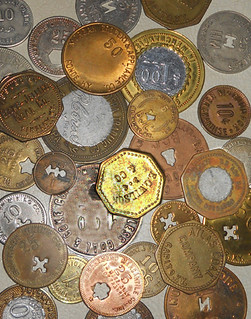 Scrip, whether paper or metal, was, in general, a form of credit extended by an employer against the employees future earnings(not unlike a debit card), a form of currency intended for
redemption only in the employer's company store, or commissary, for the purchase of food, clothing, tools and equipment, basically everything needed for daily life in the remote coal or lumber
camps of the day. Various forms of scrip were used by virtually every industry in the nation over a broad period of America's industrial history, but in the coal and lumber industries, the
practice extended primarily from the mid-19th Century until the mid-20th Century.
Scrip, whether paper or metal, was, in general, a form of credit extended by an employer against the employees future earnings(not unlike a debit card), a form of currency intended for
redemption only in the employer's company store, or commissary, for the purchase of food, clothing, tools and equipment, basically everything needed for daily life in the remote coal or lumber
camps of the day. Various forms of scrip were used by virtually every industry in the nation over a broad period of America's industrial history, but in the coal and lumber industries, the
practice extended primarily from the mid-19th Century until the mid-20th Century.
The NSCA began informally as a group of coin collectors in Central Appalachia who began meeting occasionally in the late 1960s to swap scrip, who, in 1972 formed our club, an organization later incorporated as a non-profit entity, Since the early 1970s we have been gathering each Spring and Fall for a membership meeting to renew old friendships, and to swap tokens and related historical memoribalia .Between meetings, the NSCA publishes its long-running newsletter, "Scrip Talk", chock-full of informative articles on scrip, the differing companies which issued it, those who made the dies and manufactured the tokens, etc.
Since 1972 the NSCA has also published numerous authoritative books written by our members which catalog all that's known about the tokens which are the focus of our hobby, books which have been re-vised and re-printed over the years.
http://nationalscripcollectors.org/

